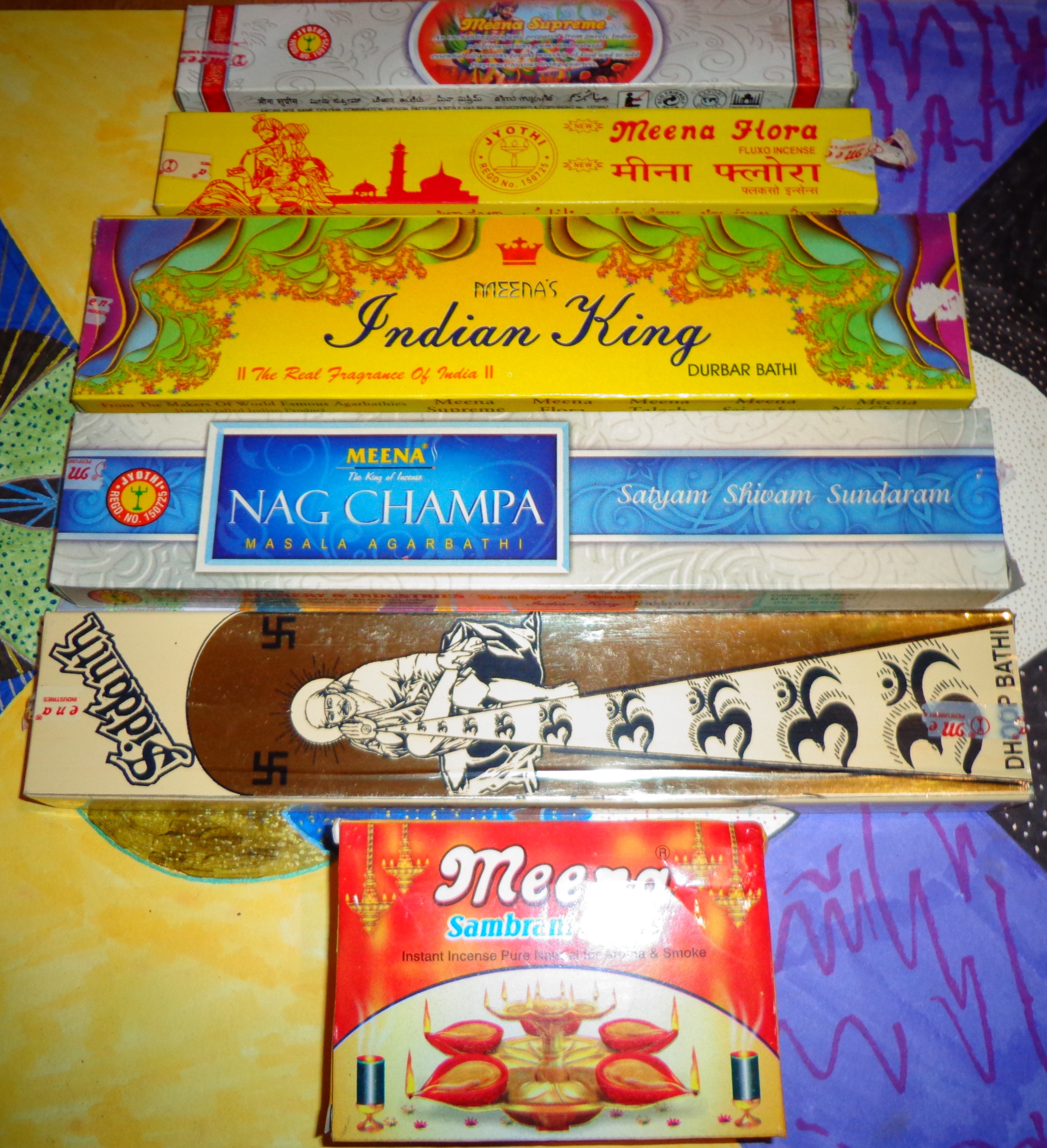 It wasn’t long ago I bought what I thought was Meena Supreme, but when I took it out, I was somewhat nonplussed. ORS has been around a while and I was originally introduced to Meena Supreme by Paul Eagle when it ended up being Happy Hari’s second incense to distribute after the Gold Nagchampa. I received a surprising number of samples at the time and some of these incenses came in Happy Hari style labels but quite a few also came in little boxes like the ones pictured here. Meena Supreme, I would guess, has to be one of the top five “name” incenses known well inside and outside India, with maybe Nag Champa and Sai Flora at the top and this one right after it. And there is a reason why, it’s a very distinctive incense, a unique combination of materials and perfumes that I reviewed way back in the day and archived on this post.
It wasn’t long ago I bought what I thought was Meena Supreme, but when I took it out, I was somewhat nonplussed. ORS has been around a while and I was originally introduced to Meena Supreme by Paul Eagle when it ended up being Happy Hari’s second incense to distribute after the Gold Nagchampa. I received a surprising number of samples at the time and some of these incenses came in Happy Hari style labels but quite a few also came in little boxes like the ones pictured here. Meena Supreme, I would guess, has to be one of the top five “name” incenses known well inside and outside India, with maybe Nag Champa and Sai Flora at the top and this one right after it. And there is a reason why, it’s a very distinctive incense, a unique combination of materials and perfumes that I reviewed way back in the day and archived on this post.
So imagine my surprise when I heard from Everest Traders on Ebay who said they were the distributor for the Kabadi family’s Meena Supreme Incense from Bangalore, India. I was very glad to hear this as this hasn’t been carried by Absolute Bliss for a while and you basically have to order overseas for it. Also, Everest Traders is California based! The box I received for review is exactly how I remember it looking all those many years ago and the aroma is as well. In fact my original review in the above link is still so in point I’m going to repeat it here first and include a link to this new source…
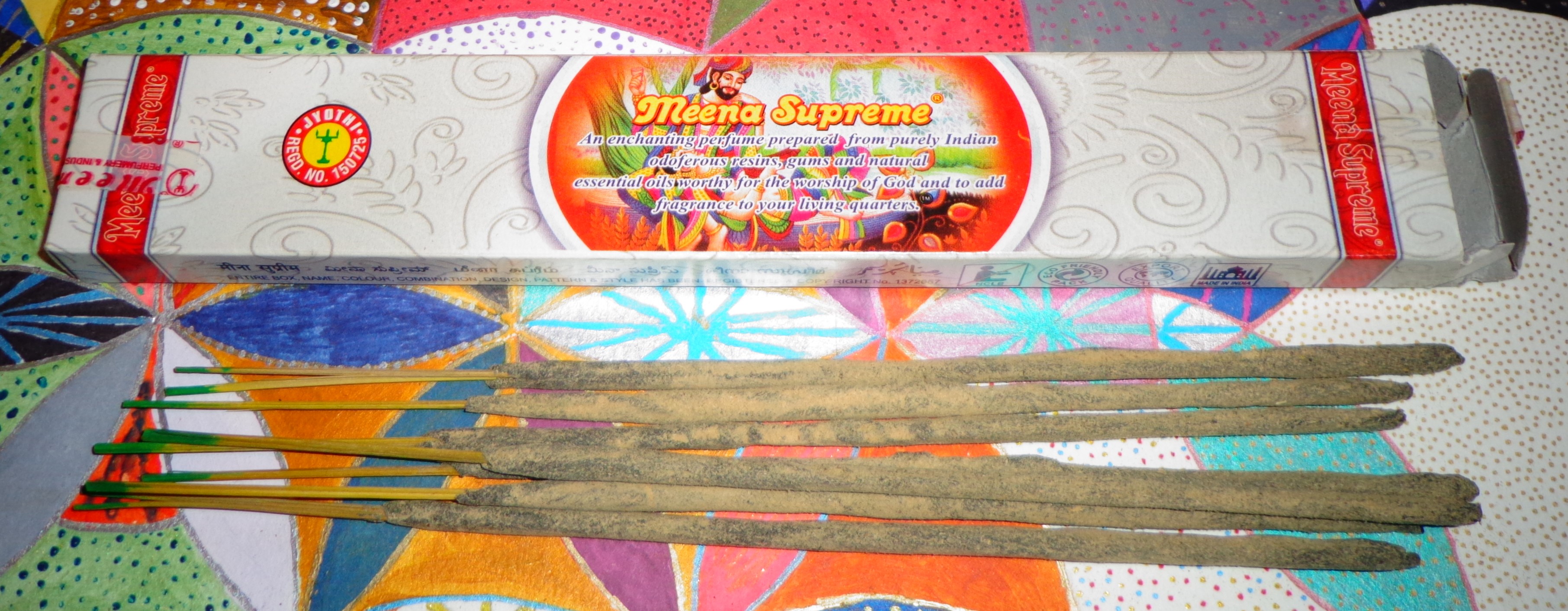 “But even if you can’t count on incense nirvana, usually something so prized is usually going to be quite good and for the most part Meena Supreme succeeds from just about every angle and if it may not be the best incense ever created, I’d definitely say it’s one of the more unique and desirable of Indian incenses and certainly one I’m going to add to our Hall of Fame. Meena Supreme is a fluxo incense which means it’s solidly in the genre inhabited by Sai Flora, Sai Deep, Sai Leela and the like, which also means it’s a big stick, highly aromatic and something of a major smoke producer. This is perfect for me, especially during the dawning of spring where various allergies often make smelling Japanese incense very difficult, but if Indian incense smoke is too much for you, Meena Supreme will likely be too. In fact during the first two sticks, I wasn’t even sure if I would end up liking it, but it was likely because it was just too much at the time.
“But even if you can’t count on incense nirvana, usually something so prized is usually going to be quite good and for the most part Meena Supreme succeeds from just about every angle and if it may not be the best incense ever created, I’d definitely say it’s one of the more unique and desirable of Indian incenses and certainly one I’m going to add to our Hall of Fame. Meena Supreme is a fluxo incense which means it’s solidly in the genre inhabited by Sai Flora, Sai Deep, Sai Leela and the like, which also means it’s a big stick, highly aromatic and something of a major smoke producer. This is perfect for me, especially during the dawning of spring where various allergies often make smelling Japanese incense very difficult, but if Indian incense smoke is too much for you, Meena Supreme will likely be too. In fact during the first two sticks, I wasn’t even sure if I would end up liking it, but it was likely because it was just too much at the time.
Since my initial foray into Meena Supreme, I think I’ve burned three to four boxes of it if not more (the size box I got fit about 6-8 sticks I believe). It is a highly addictive scent once you get it, as most signature scents are, and is also very hard to describe. Meena Supreme starts with the same earthy, almost stable-like background tones of Sai Flora but that’s where the similarity between incenses ends. Where Sai Flora goes in a bright, heavily floral, brassy direction, Meena Supreme is much more sultry with a mix of woods, rose, cocoa, coffee (with milk) and most importantly a feeling that all the subscents have been blended and aged. Most importantly Meena Supreme had the ability to make me think about it a lot when I wasn’t burning it, which has led to a lot of impromptu reaches.”
I would only add here in 2022 that the sticks may be a bit smaller (and maybe less smokier?) than I remember (which may of course be more my memory than the stick) but I love that all the notes I listed here are still completely relevant. I came to love the mix of earthiness and sweetness almost like a mix of fresh soil and brown sugar. So anyway if you love Indian incense and haven’t tried this yet now’s your chance!
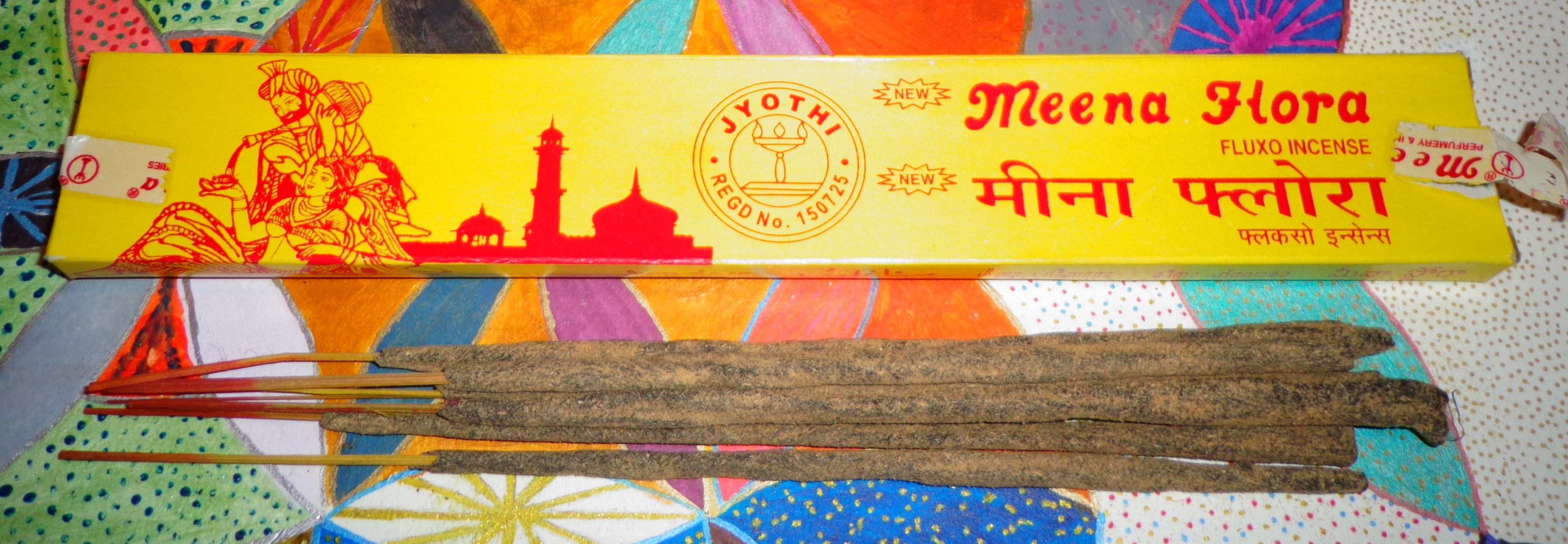 Everest Traders also sent over some other Meena Perfumery Industries incenses, which also were a lot of fun (and I would mention here the ET packaging is really nice, very cognizant of protecting all the incenses from damage). One thing I came to find out rather quickly is other than the Sambrani Stems, which I will get to last, all of the other Meena incenses share a similar base to the Supreme and share a lot of the same aromatic notes, which makes it a little harder to separate one from the other. You might want to think of these in the sense that there’s probably a top perfume mix that differs from incense to incense. So the first one of these is Meena Flora, described as a “fluxo incense.” We have, of course, reviewed several from this style over the years, the most famous being the red package Sai Flora, but we, perhaps most recently, took a look at a couple of El incenses in the same category, These are thick stick, very distinctive incenses and so you might not only consider the Meena base for the Meena Flora but the flora/fluxo style as well and consider it a mix of those things. It still has a lot of the cocoa/coffee/brown sugar/earthy base to it, but it’s a bit more heavily aromatic than the Supreme with some of the same aspects that Sai Flora has. It’s not quite that brassy or sparkly, in fact it’s quite subdued compared to a lot of other incenses in this style. My most recent personal burning has been the Vedic Vaani Sai Flora which is much more refined and well on the other side of the red packet on the earthiness-to-refined axis. It’s actually probably more different as a flora than it is as a Meena incense.
Everest Traders also sent over some other Meena Perfumery Industries incenses, which also were a lot of fun (and I would mention here the ET packaging is really nice, very cognizant of protecting all the incenses from damage). One thing I came to find out rather quickly is other than the Sambrani Stems, which I will get to last, all of the other Meena incenses share a similar base to the Supreme and share a lot of the same aromatic notes, which makes it a little harder to separate one from the other. You might want to think of these in the sense that there’s probably a top perfume mix that differs from incense to incense. So the first one of these is Meena Flora, described as a “fluxo incense.” We have, of course, reviewed several from this style over the years, the most famous being the red package Sai Flora, but we, perhaps most recently, took a look at a couple of El incenses in the same category, These are thick stick, very distinctive incenses and so you might not only consider the Meena base for the Meena Flora but the flora/fluxo style as well and consider it a mix of those things. It still has a lot of the cocoa/coffee/brown sugar/earthy base to it, but it’s a bit more heavily aromatic than the Supreme with some of the same aspects that Sai Flora has. It’s not quite that brassy or sparkly, in fact it’s quite subdued compared to a lot of other incenses in this style. My most recent personal burning has been the Vedic Vaani Sai Flora which is much more refined and well on the other side of the red packet on the earthiness-to-refined axis. It’s actually probably more different as a flora than it is as a Meena incense.
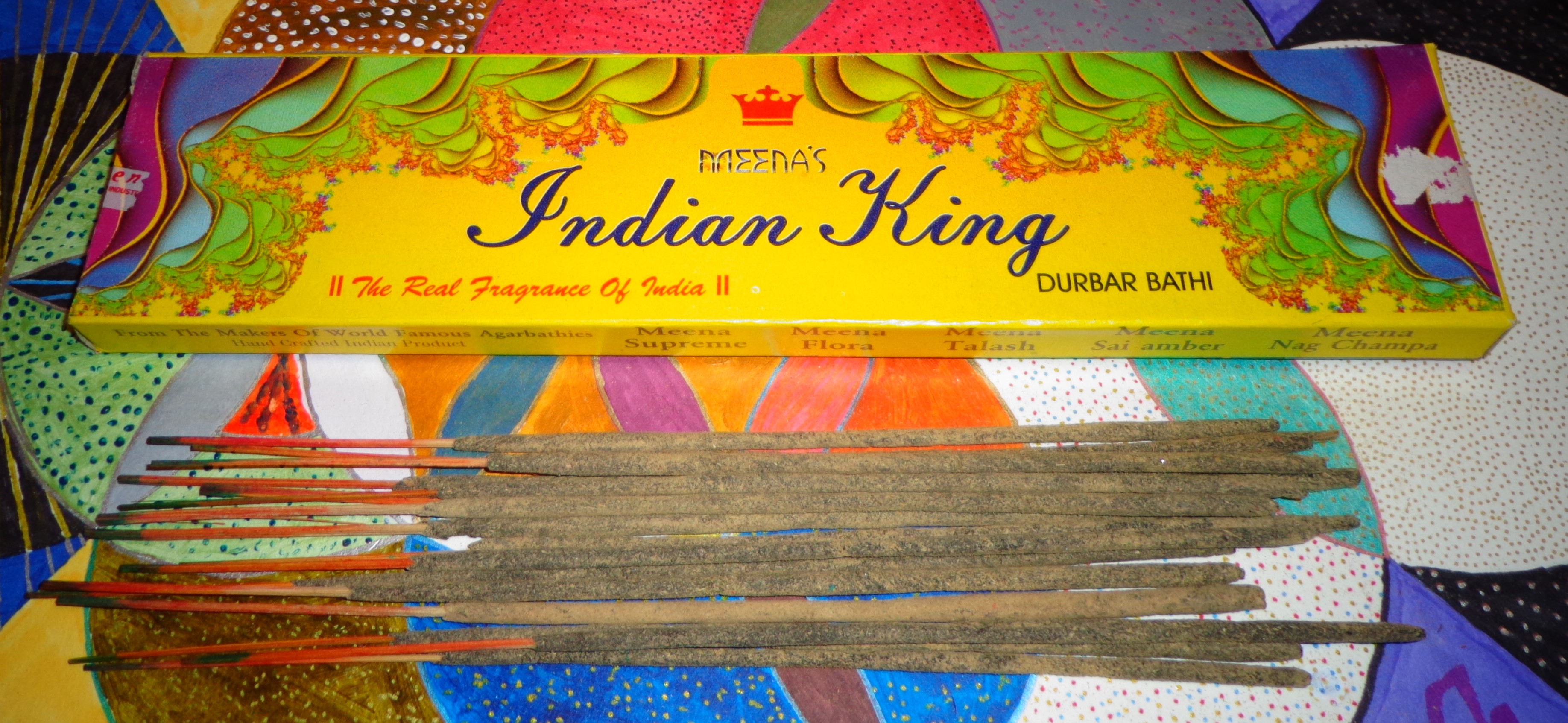 Where both the Supreme and the Flora are small 8 stick boxes, the Meena Indian King has a higher stick count (as do the rest of these incenses) and the incense itself is certainly less weighty than the Supreme and Flora. While you can still recognize the same base I have mentioned in the previous two incenses, the Indian King feels a bit drier. It’s described as a durbar bathi, which has often been a category incenses like champas fall under, and this one does feel a bit more like a Meena-style Nag Champa variant to me. I’m not sensing enough halmaddi to keep it soft but there may be a little in there, but it’s actually overall not quite as sweet as the Supreme. It’s kind of elegant in a way and very traditional. And a walk in and out of the room shows it dissipates quite nicely too with a slighty tangy-meets brown sugar edge on top. Given it’s not all that different from the Supreme, it could be considered a more price-conscious alternative given the stick count.
Where both the Supreme and the Flora are small 8 stick boxes, the Meena Indian King has a higher stick count (as do the rest of these incenses) and the incense itself is certainly less weighty than the Supreme and Flora. While you can still recognize the same base I have mentioned in the previous two incenses, the Indian King feels a bit drier. It’s described as a durbar bathi, which has often been a category incenses like champas fall under, and this one does feel a bit more like a Meena-style Nag Champa variant to me. I’m not sensing enough halmaddi to keep it soft but there may be a little in there, but it’s actually overall not quite as sweet as the Supreme. It’s kind of elegant in a way and very traditional. And a walk in and out of the room shows it dissipates quite nicely too with a slighty tangy-meets brown sugar edge on top. Given it’s not all that different from the Supreme, it could be considered a more price-conscious alternative given the stick count.
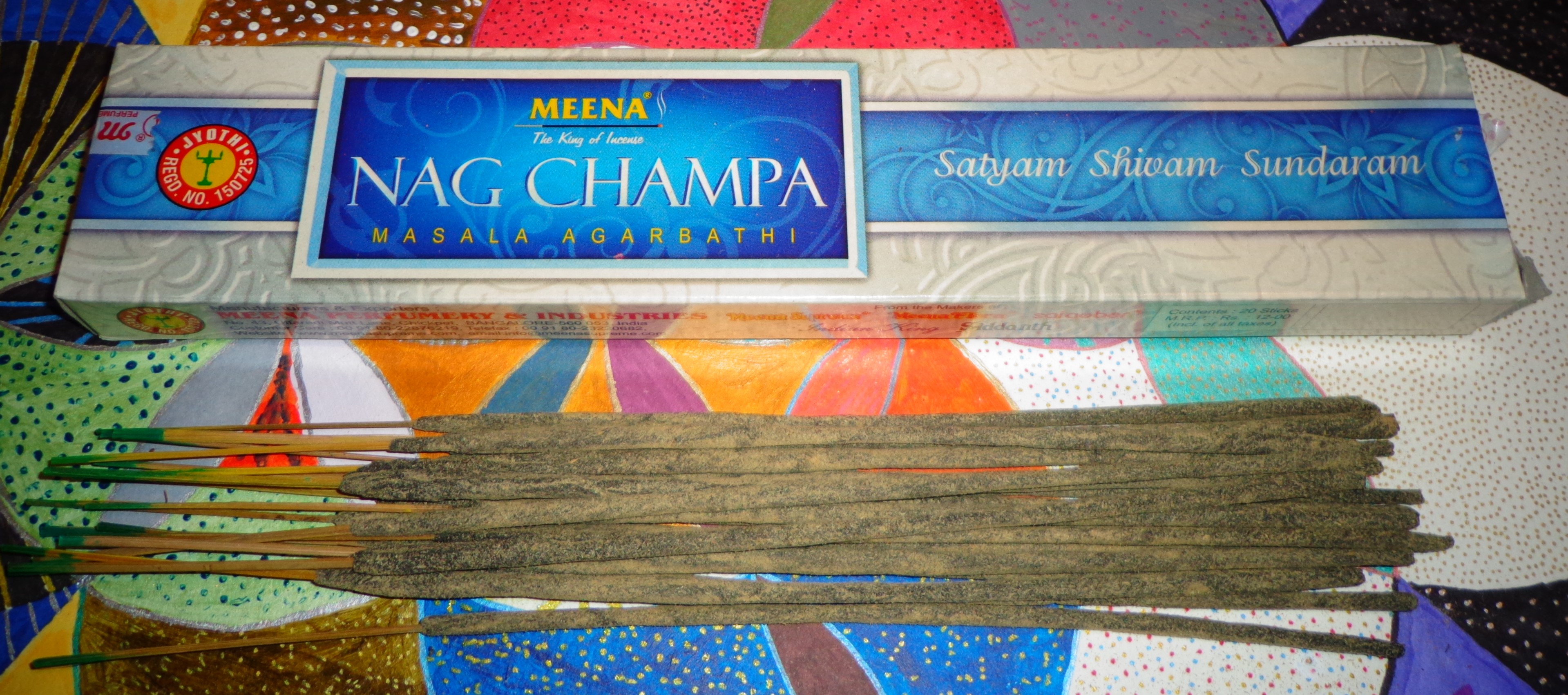 One of the reasons Indian King struck me as a champa type is because it’s not terribly far off from the Meena Nag Champa. Seriously the description of this, at least if you were familiar with Meena Supreme, is imagine Meena doing a Nag Champa. It feels like champas are so variant these days that we’ve almost lost what we might have considered the standard because the Satya Blue Box is such a shadow of what it used to be. And in that sense, the Meena isn’t terribly different from the more modern hard stick variants that tend to send most of the aroma up on a charcoal base. This is definitely still a masala base and may have a little halmaddi in it but most notable it’s a little sweeter than, say the Happy Hari/Temple of Incense Gold or the AB carried Vintage Nag Champa. Some of these vedic champas feel like they could pull rain out of the air with their driness and while the perfumes are probably a bit more in the pocket than this one, this stick’s combination of some aspects of Meena Supreme (like, say, the earthiness and brown sugar) make it just a bit more interesting. With so many champa variants out there and it basically a virtual impossibility to go back to the great stick of yesteryearm I lean towards wanting variation more, so I like the differences on this one.
One of the reasons Indian King struck me as a champa type is because it’s not terribly far off from the Meena Nag Champa. Seriously the description of this, at least if you were familiar with Meena Supreme, is imagine Meena doing a Nag Champa. It feels like champas are so variant these days that we’ve almost lost what we might have considered the standard because the Satya Blue Box is such a shadow of what it used to be. And in that sense, the Meena isn’t terribly different from the more modern hard stick variants that tend to send most of the aroma up on a charcoal base. This is definitely still a masala base and may have a little halmaddi in it but most notable it’s a little sweeter than, say the Happy Hari/Temple of Incense Gold or the AB carried Vintage Nag Champa. Some of these vedic champas feel like they could pull rain out of the air with their driness and while the perfumes are probably a bit more in the pocket than this one, this stick’s combination of some aspects of Meena Supreme (like, say, the earthiness and brown sugar) make it just a bit more interesting. With so many champa variants out there and it basically a virtual impossibility to go back to the great stick of yesteryearm I lean towards wanting variation more, so I like the differences on this one.
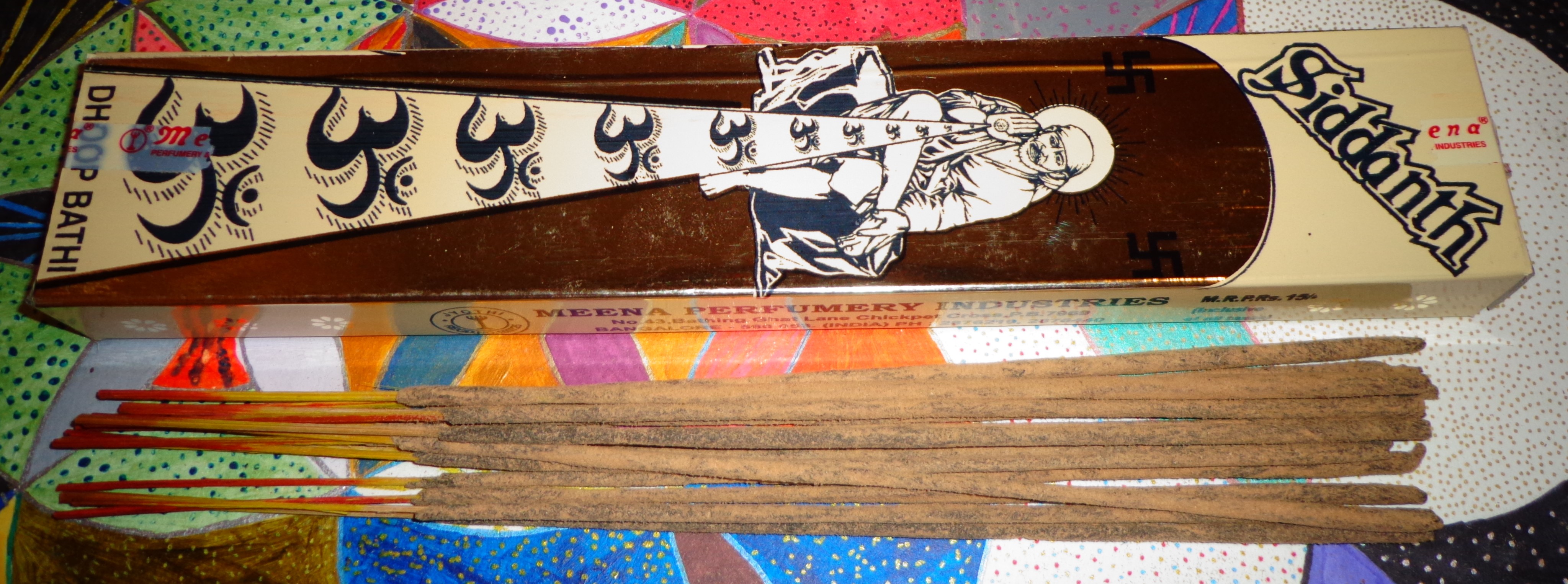 So then there’s Meena Siddanth with a dude beaming om symbols, and, gulp, a couple of swastikas in the mix, probably not the most popular symbology in the west. As you might know this has a much different meaning in India than it does in the West so I’ll just move on to the incense itself. This style is considered a “dhoop bathi” although it’s really difficult to tell how all of these sticks vary in style from looking at them; however, this is just a wee touch softer than the previous incenses. This has a more diverse aroma, it’s still a Meena stick at heart but it has a mix of fruity, powdery, herbal, and a touch of wood oils that make it probably the most distinctive stick so far. In fact this seems like quite the lovely and complex incense with all sorts of things going on and it’s by far the least earthiest of five sticks. Perhaps if you have just tried the Supreme, this might be the one I’d recommend next.
So then there’s Meena Siddanth with a dude beaming om symbols, and, gulp, a couple of swastikas in the mix, probably not the most popular symbology in the west. As you might know this has a much different meaning in India than it does in the West so I’ll just move on to the incense itself. This style is considered a “dhoop bathi” although it’s really difficult to tell how all of these sticks vary in style from looking at them; however, this is just a wee touch softer than the previous incenses. This has a more diverse aroma, it’s still a Meena stick at heart but it has a mix of fruity, powdery, herbal, and a touch of wood oils that make it probably the most distinctive stick so far. In fact this seems like quite the lovely and complex incense with all sorts of things going on and it’s by far the least earthiest of five sticks. Perhaps if you have just tried the Supreme, this might be the one I’d recommend next.
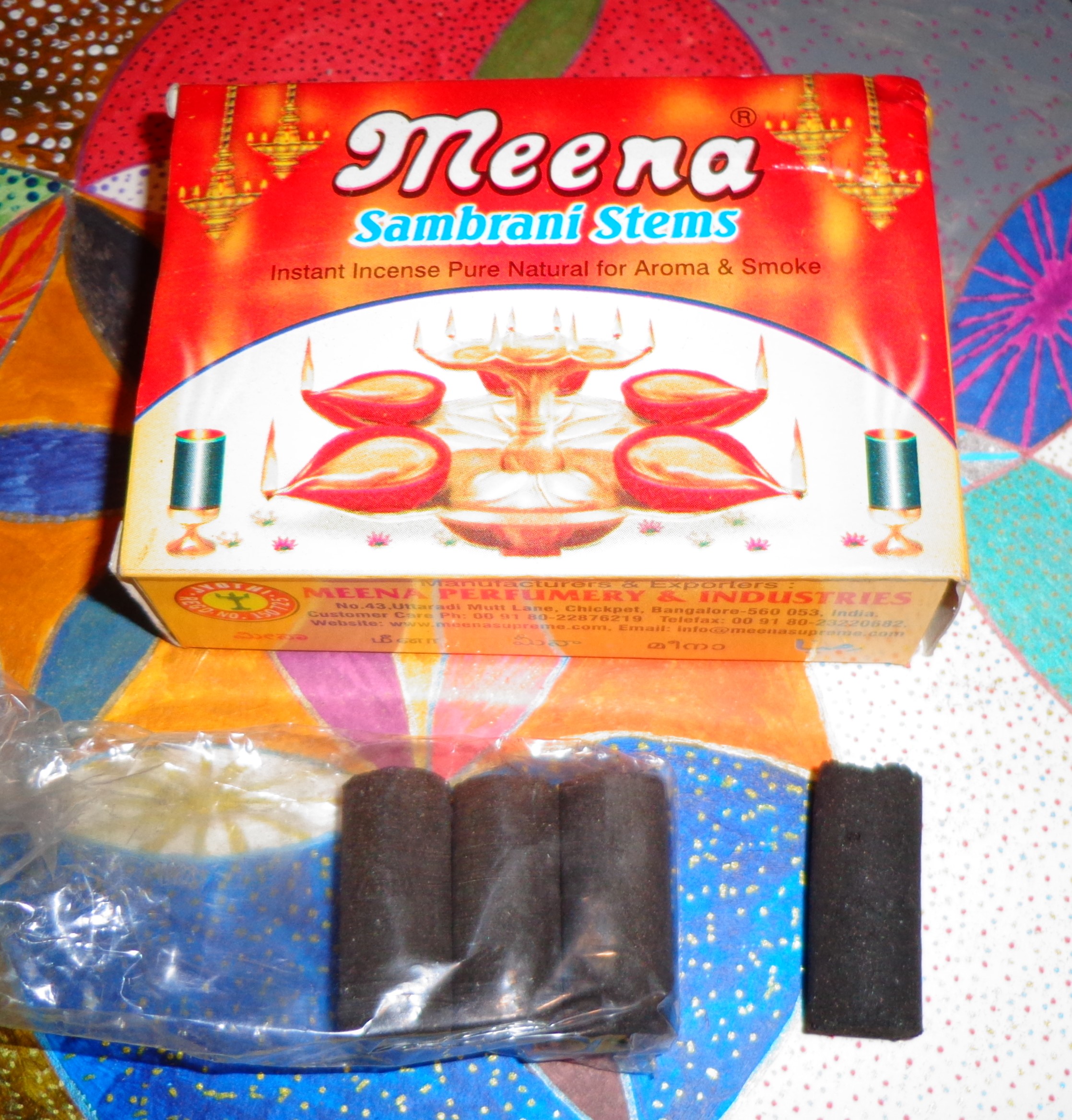 Now the Meena Sambrani Stems are a completely different style of incense. Looking around on the net it seems like Sambrani Cups got a bit of notoriety for a bit when this style of using cow dung to heat up resins came to a bit greater attention and a search of these cups show some rather offputting visuals. However cow dung is not the only way to heat resins up and it looks like the outside of these dhoop-like cylinders are probably based on charcoal, although like any incense I can’t give a comprehensive list of what’s actually in these (and I can’t say I’ve every tried the straight up base note of cow dung to be informative). All I can say is this is possibly the most intriguing incense in this batch. Sambrani, like loban, is one of those terms that seems to shift in meaning depending on who is using it and both seem to be anything from resin mixes to specific resins like benzoin or frankincense). Ultimately the aroma is almost thoroughly resinous and intense with a lovely bit of spice and a touch of caramel. Unlike a lot of Indian masalas where the resins really get watered down with the stick base, the level of resin is really nice and strong here with a fruitiness you usually won’t find in a loban or other highly resinous stick. So yes this is a lovely batch of (sort of) cones, like many dhoops they’re really smoky and will fill up a large space fast.
Now the Meena Sambrani Stems are a completely different style of incense. Looking around on the net it seems like Sambrani Cups got a bit of notoriety for a bit when this style of using cow dung to heat up resins came to a bit greater attention and a search of these cups show some rather offputting visuals. However cow dung is not the only way to heat resins up and it looks like the outside of these dhoop-like cylinders are probably based on charcoal, although like any incense I can’t give a comprehensive list of what’s actually in these (and I can’t say I’ve every tried the straight up base note of cow dung to be informative). All I can say is this is possibly the most intriguing incense in this batch. Sambrani, like loban, is one of those terms that seems to shift in meaning depending on who is using it and both seem to be anything from resin mixes to specific resins like benzoin or frankincense). Ultimately the aroma is almost thoroughly resinous and intense with a lovely bit of spice and a touch of caramel. Unlike a lot of Indian masalas where the resins really get watered down with the stick base, the level of resin is really nice and strong here with a fruitiness you usually won’t find in a loban or other highly resinous stick. So yes this is a lovely batch of (sort of) cones, like many dhoops they’re really smoky and will fill up a large space fast.
So ultimately the new or casual browser is recommended to check out the Meena Supreme if you haven’t and certainly the Sambrani Stems and Siddanth next, but I enjoyed all of these. Nothing is quite like a Meena incense, they have a distinctive personal stamp to their style that is quite recognizable once you get to use. it. And we certainly encourage Everest Traders to bring more of this line to the west!
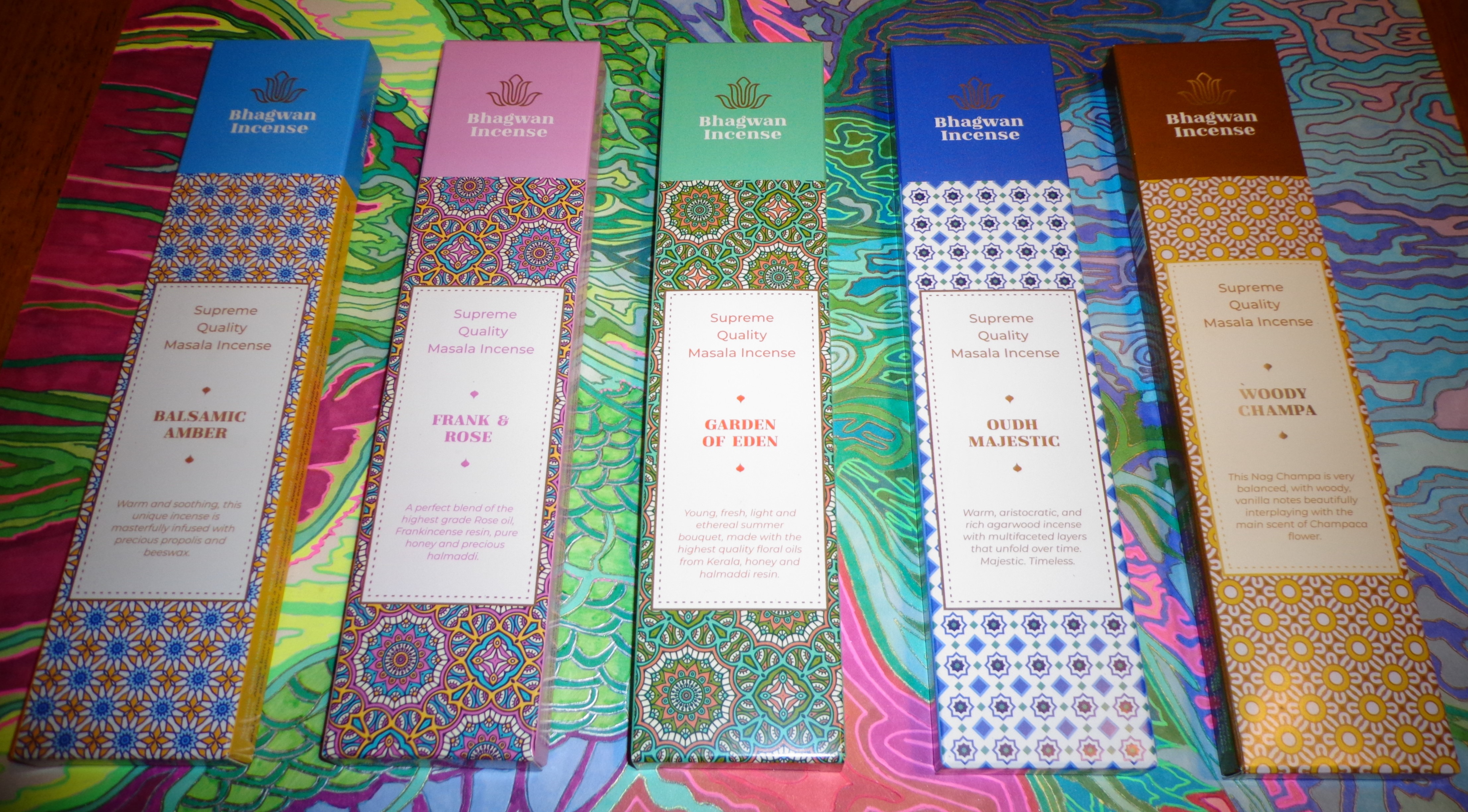
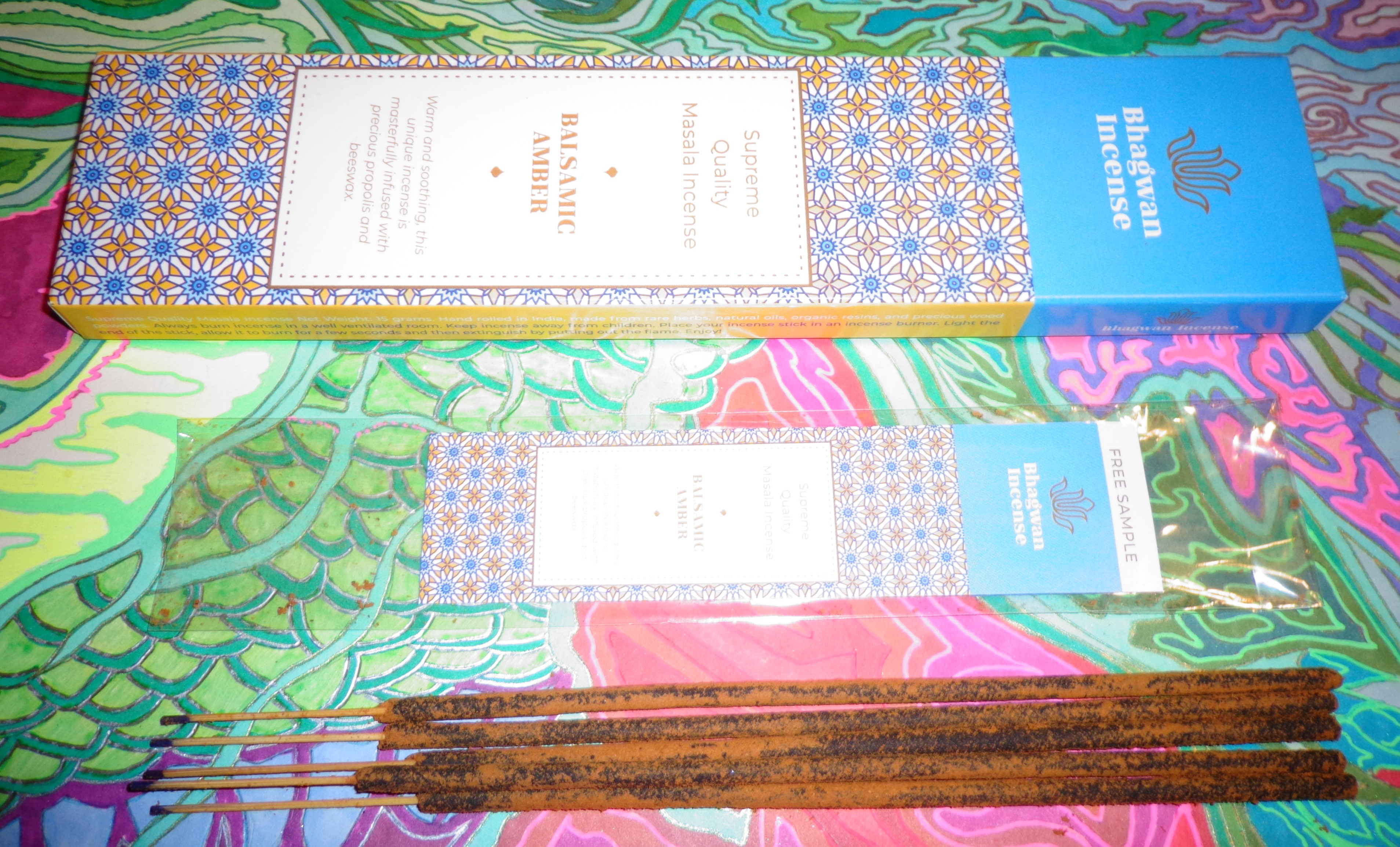
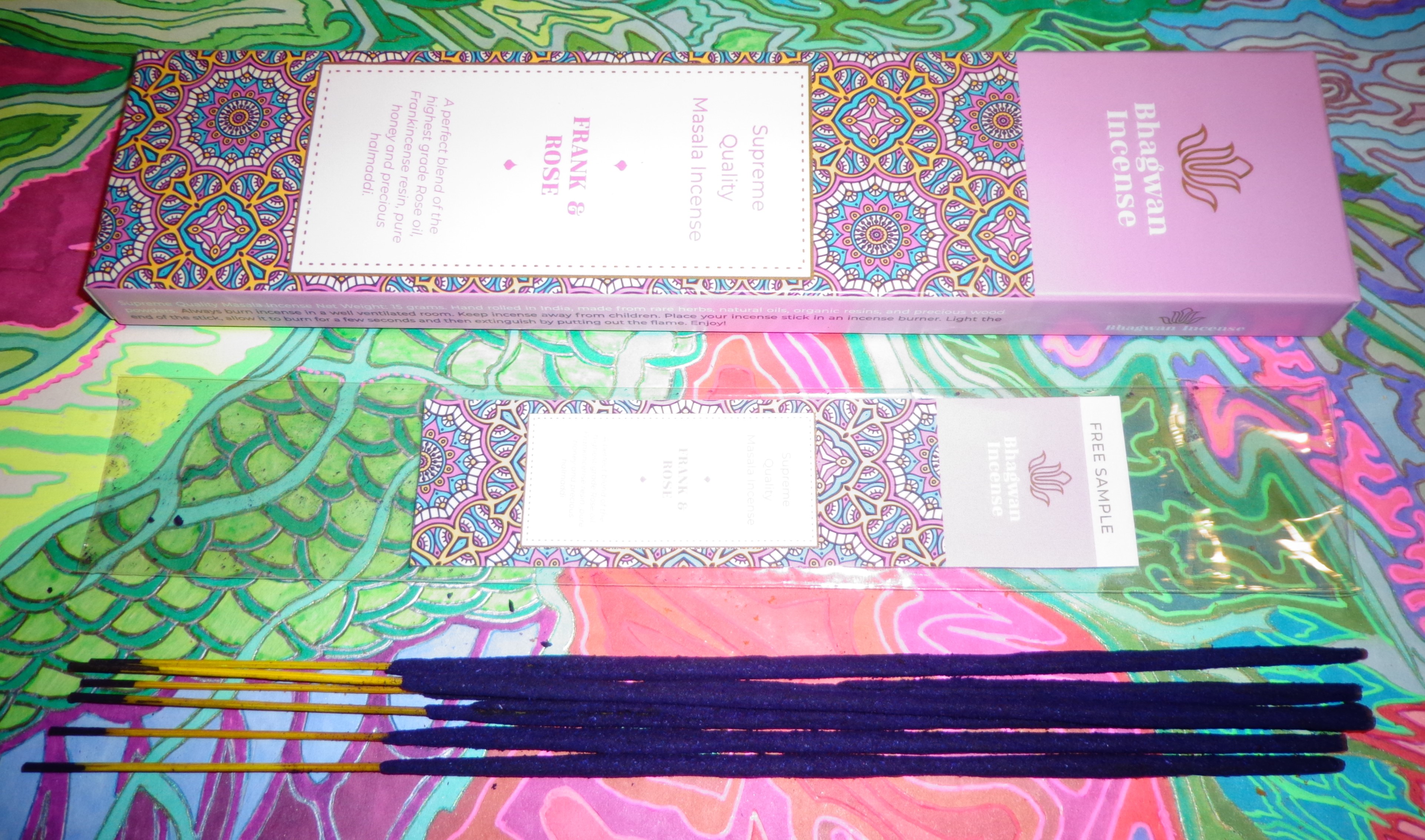 I was expecting
I was expecting 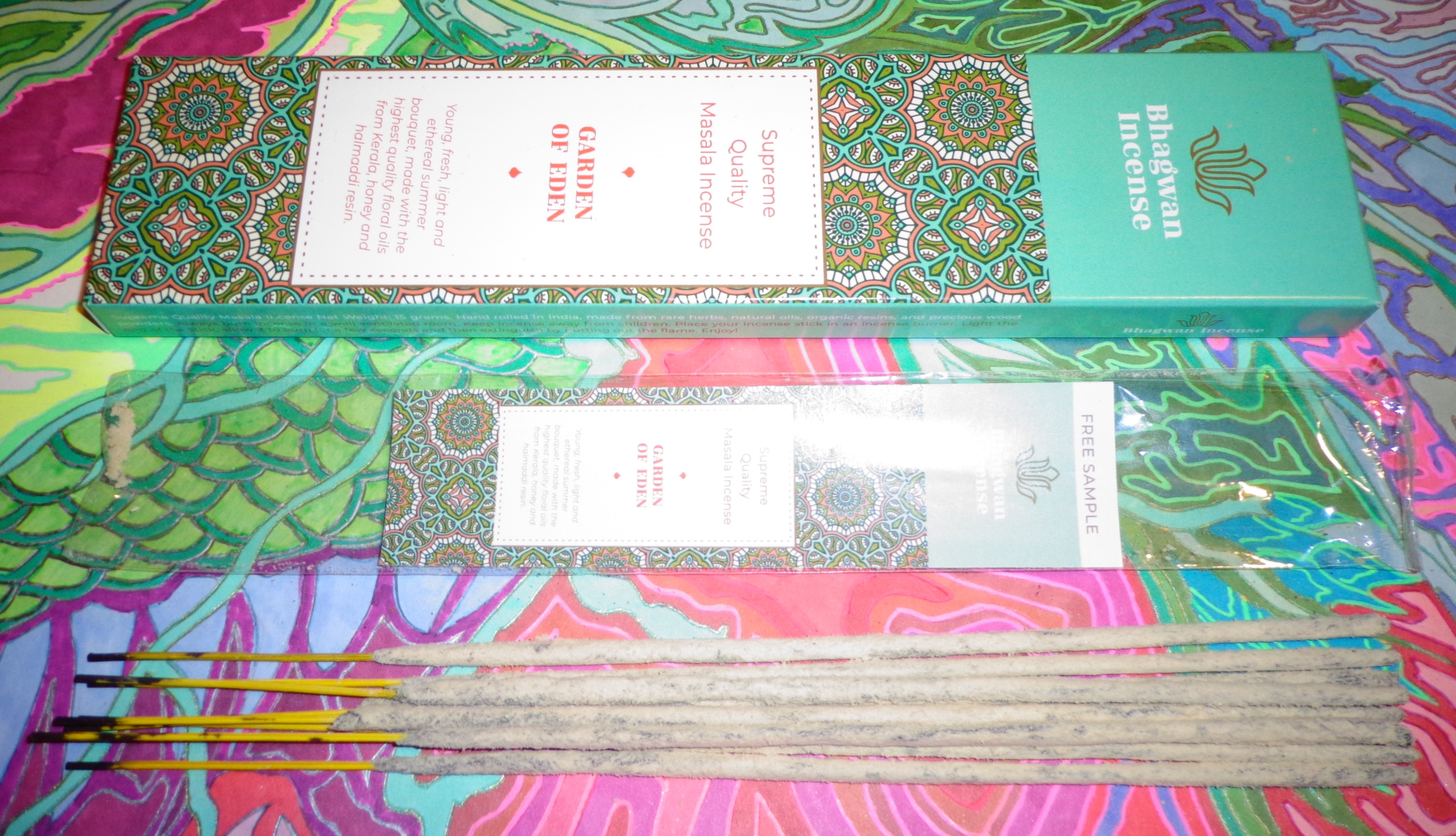 Of the five incenses here, I’m not completely sure of the provenance of each, but
Of the five incenses here, I’m not completely sure of the provenance of each, but 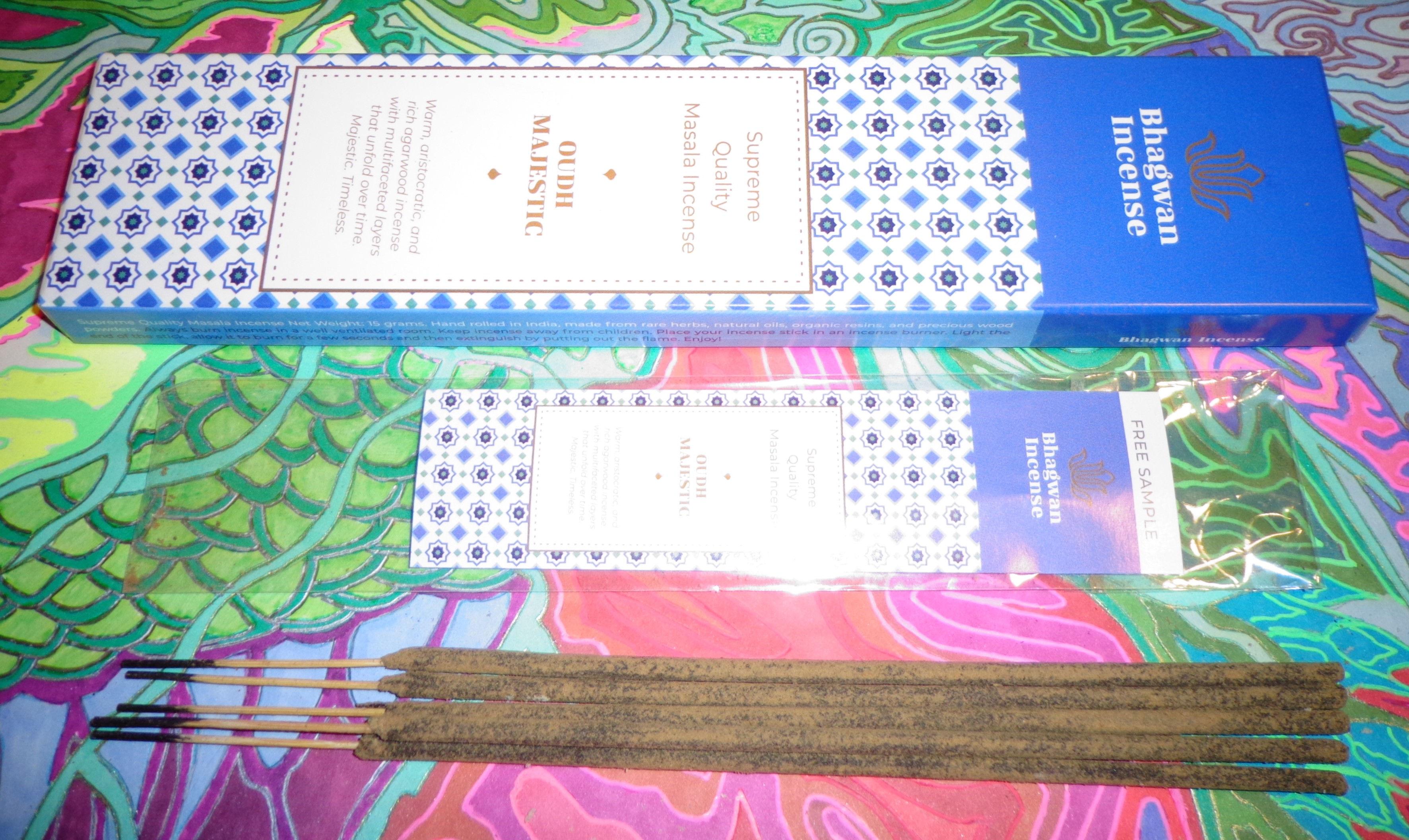 It’s been a long time since there was a real contender to the Oud Masala from the Happy Hari family, that nearly perfect blend of masala base and at least an approximation of a decent oud to complement it. There are also a number of charcoal based ouds out there that one might not be able to pick out a specific aroma in a line up. Pure Incense have provided a wide and almost dizzying array of oud and aloeswood incenses from Madhavadas and often the issue is less the top oils than the base. I’m not sure where
It’s been a long time since there was a real contender to the Oud Masala from the Happy Hari family, that nearly perfect blend of masala base and at least an approximation of a decent oud to complement it. There are also a number of charcoal based ouds out there that one might not be able to pick out a specific aroma in a line up. Pure Incense have provided a wide and almost dizzying array of oud and aloeswood incenses from Madhavadas and often the issue is less the top oils than the base. I’m not sure where 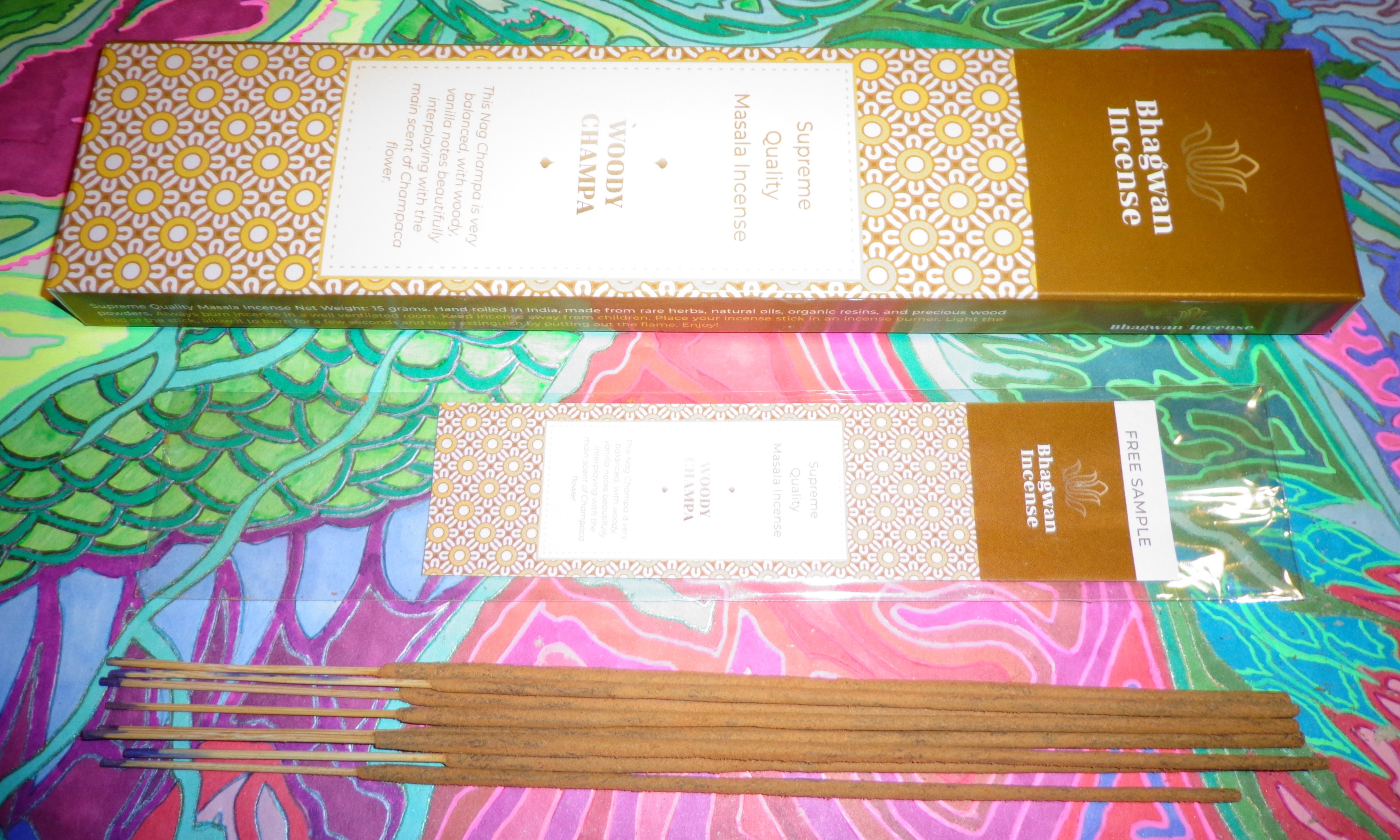 Finally, in this group, is the somewhat humble
Finally, in this group, is the somewhat humble 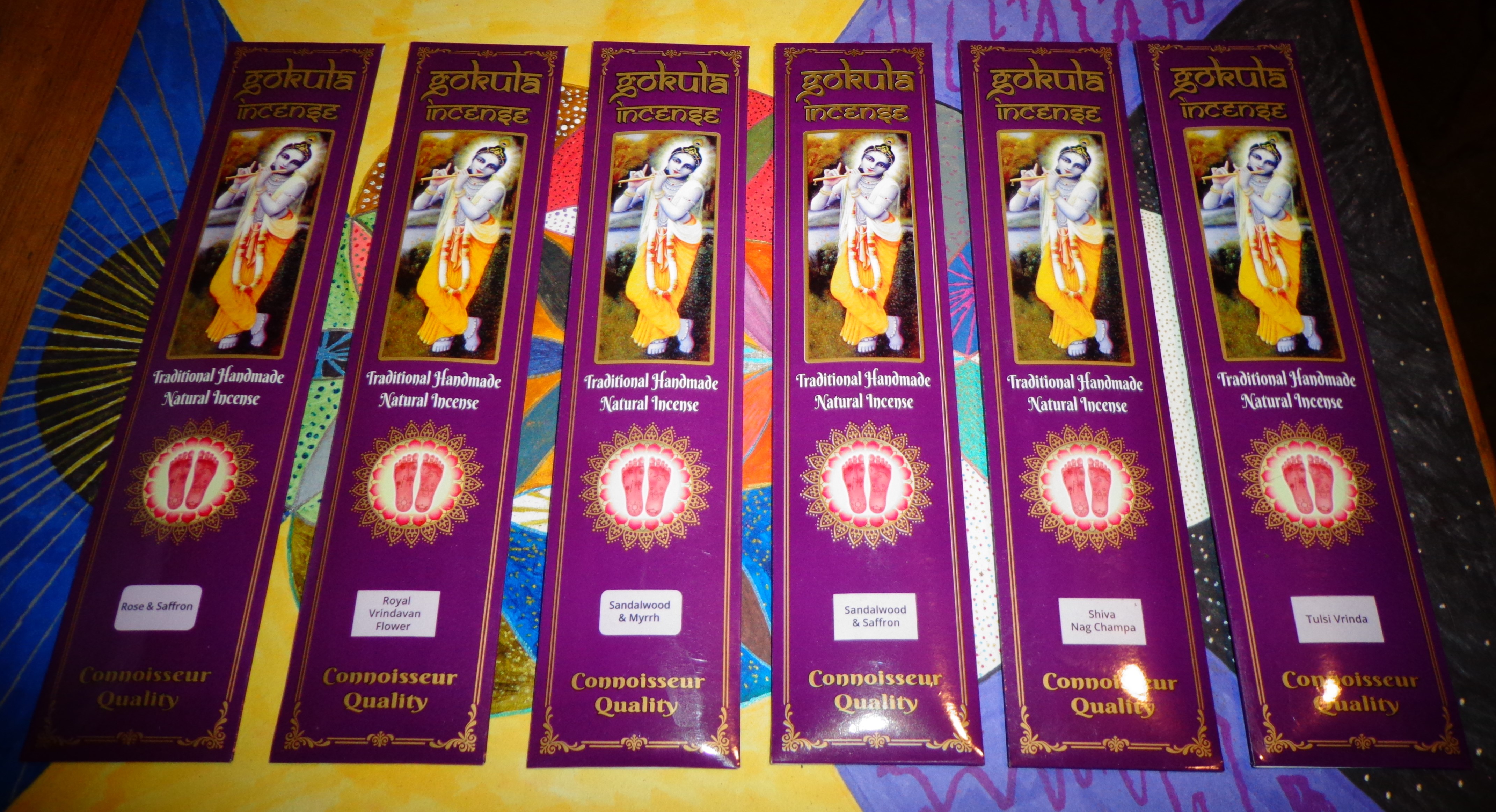 This is the last of four in a series of Gokula Incense reviews, please see the first installment for an introduction to the company.
This is the last of four in a series of Gokula Incense reviews, please see the first installment for an introduction to the company.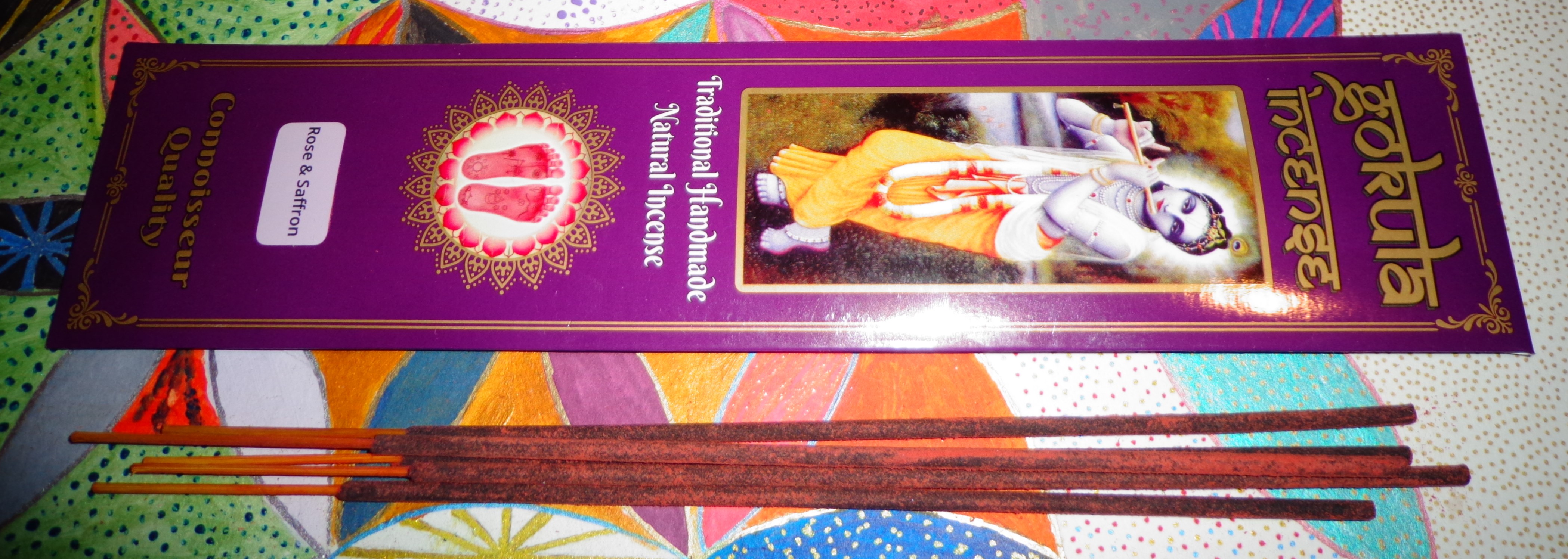
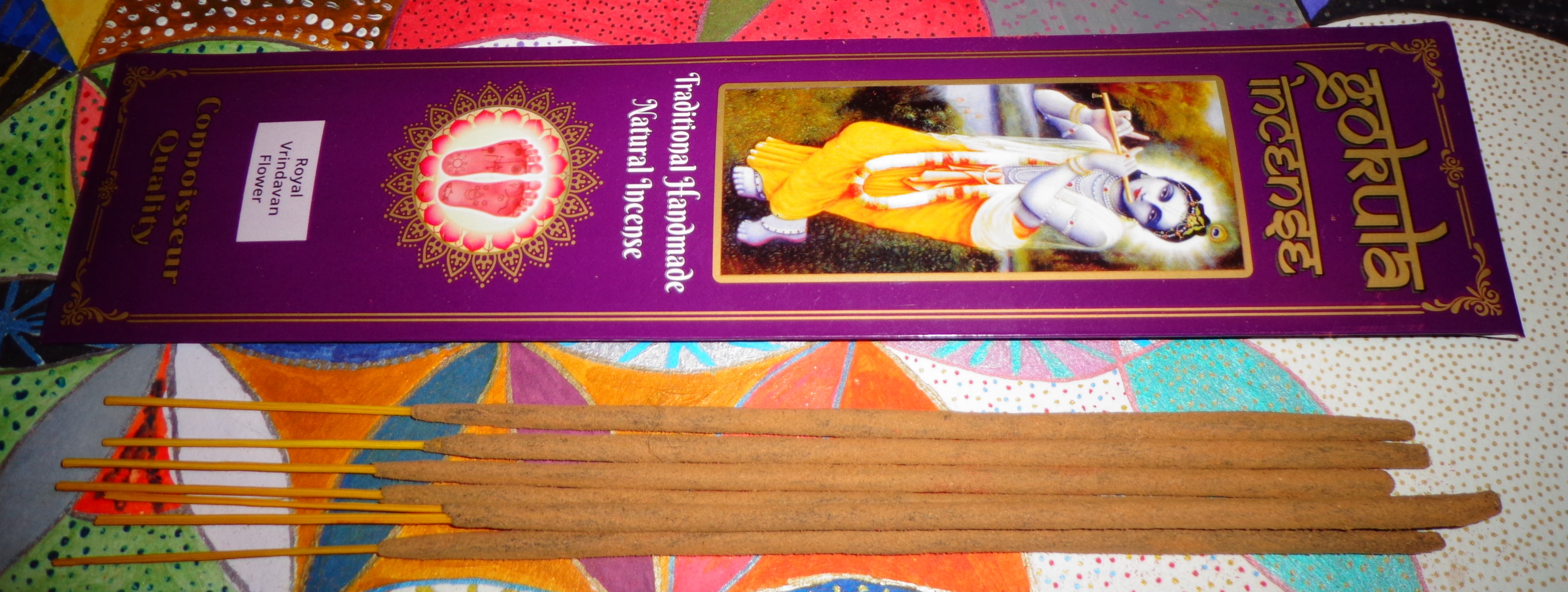 Every time I see an incense with Vrindavan in it, it’s kind of like musk or lotus, they’re so different from stick to stick that you can’t always be sure what you’re getting. But Gokula’s
Every time I see an incense with Vrindavan in it, it’s kind of like musk or lotus, they’re so different from stick to stick that you can’t always be sure what you’re getting. But Gokula’s 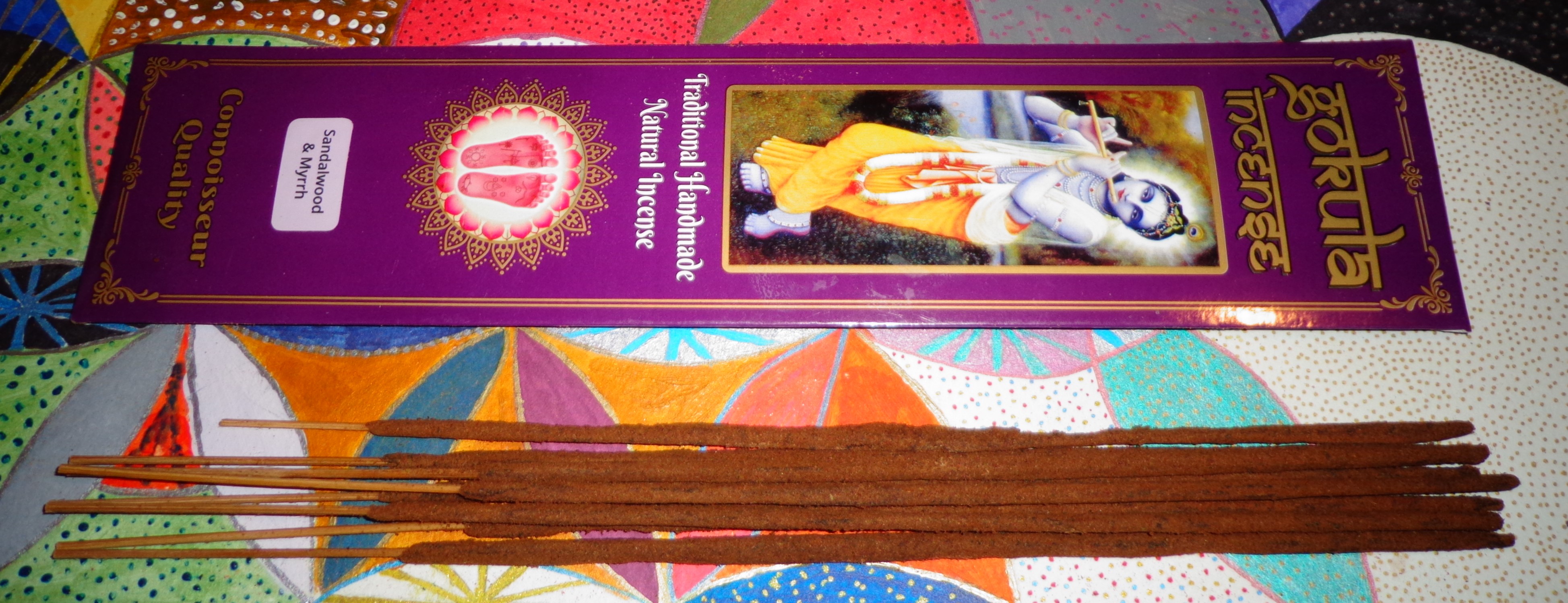 So I had almost forgot until I checked my notes but there was a slight snafu with my order (no worries the kind Gokula folks cleared it up right away) but I think there was one non-Madhavadas I did not get and then one Mahavadas I did get and that’s the
So I had almost forgot until I checked my notes but there was a slight snafu with my order (no worries the kind Gokula folks cleared it up right away) but I think there was one non-Madhavadas I did not get and then one Mahavadas I did get and that’s the 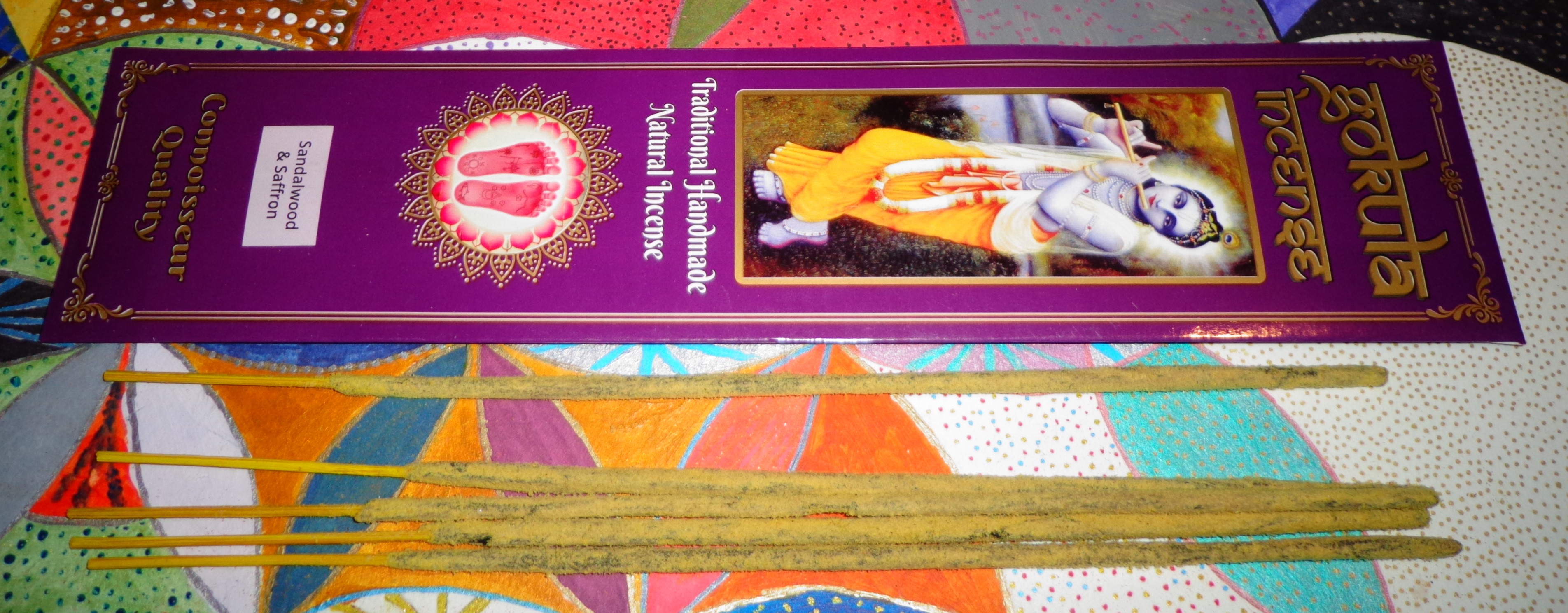 Visually, the
Visually, the 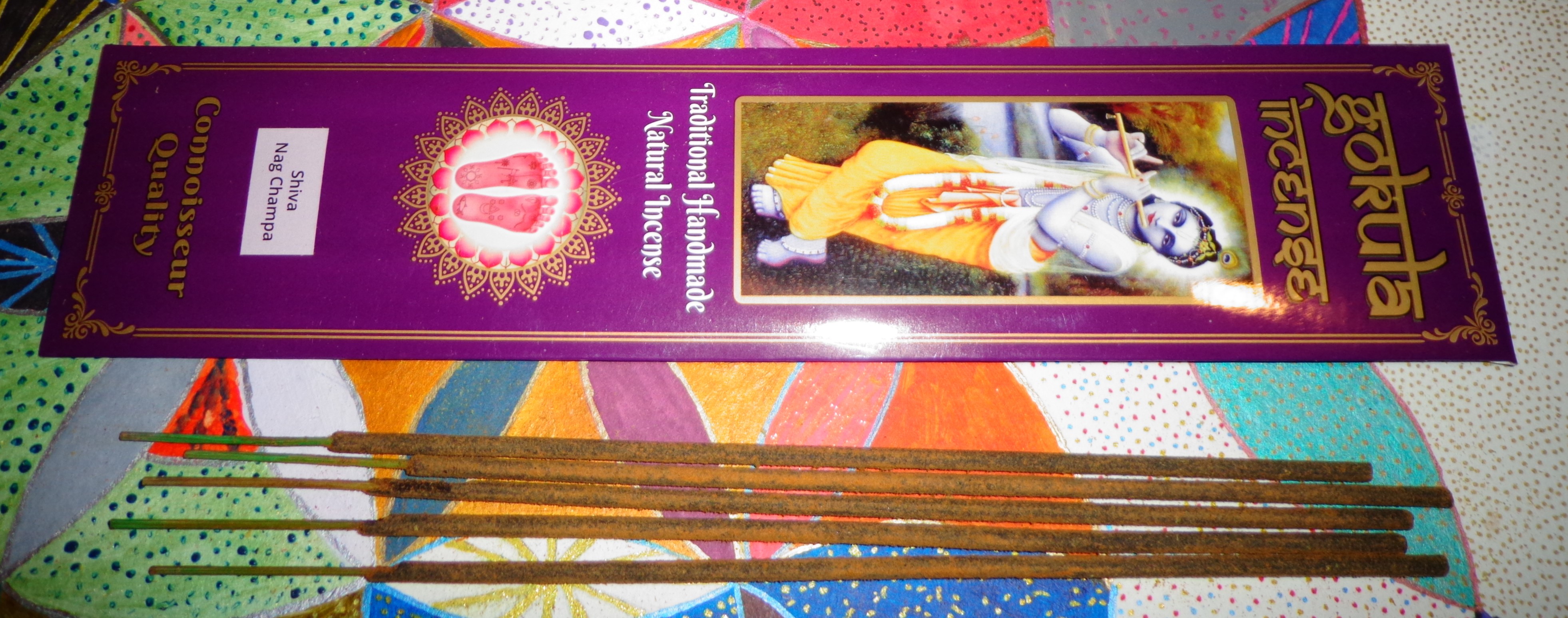 Although
Although 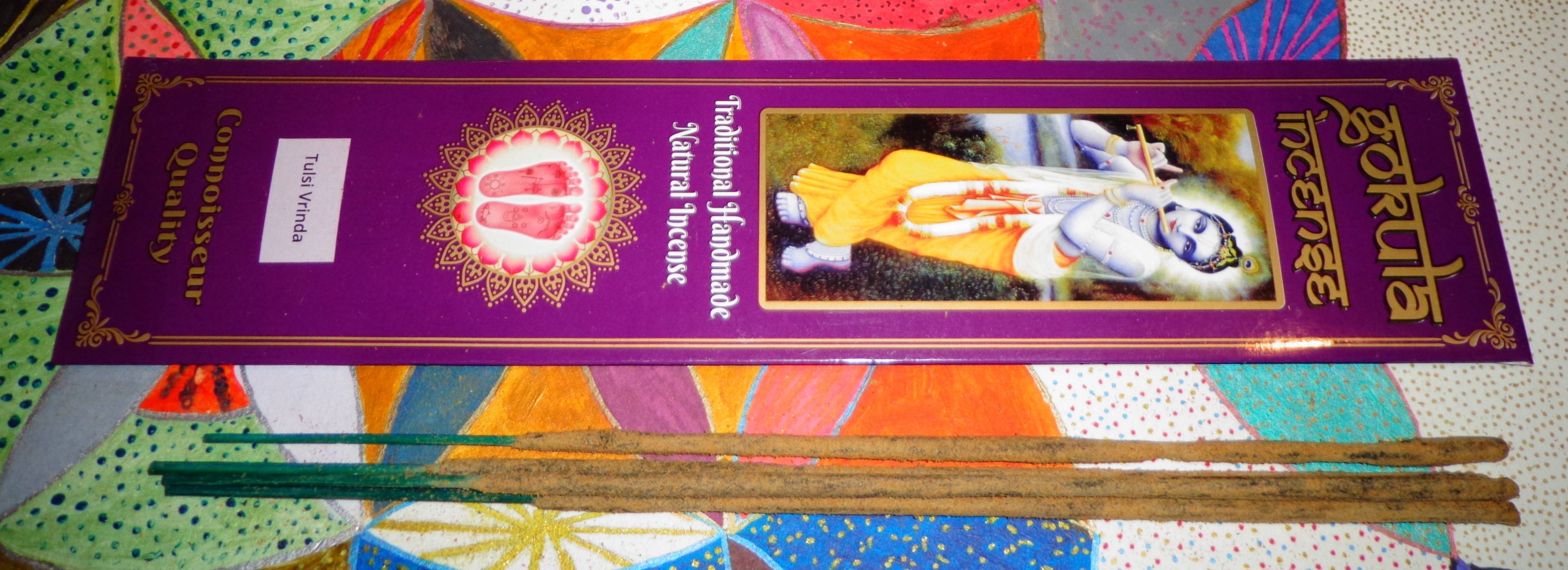
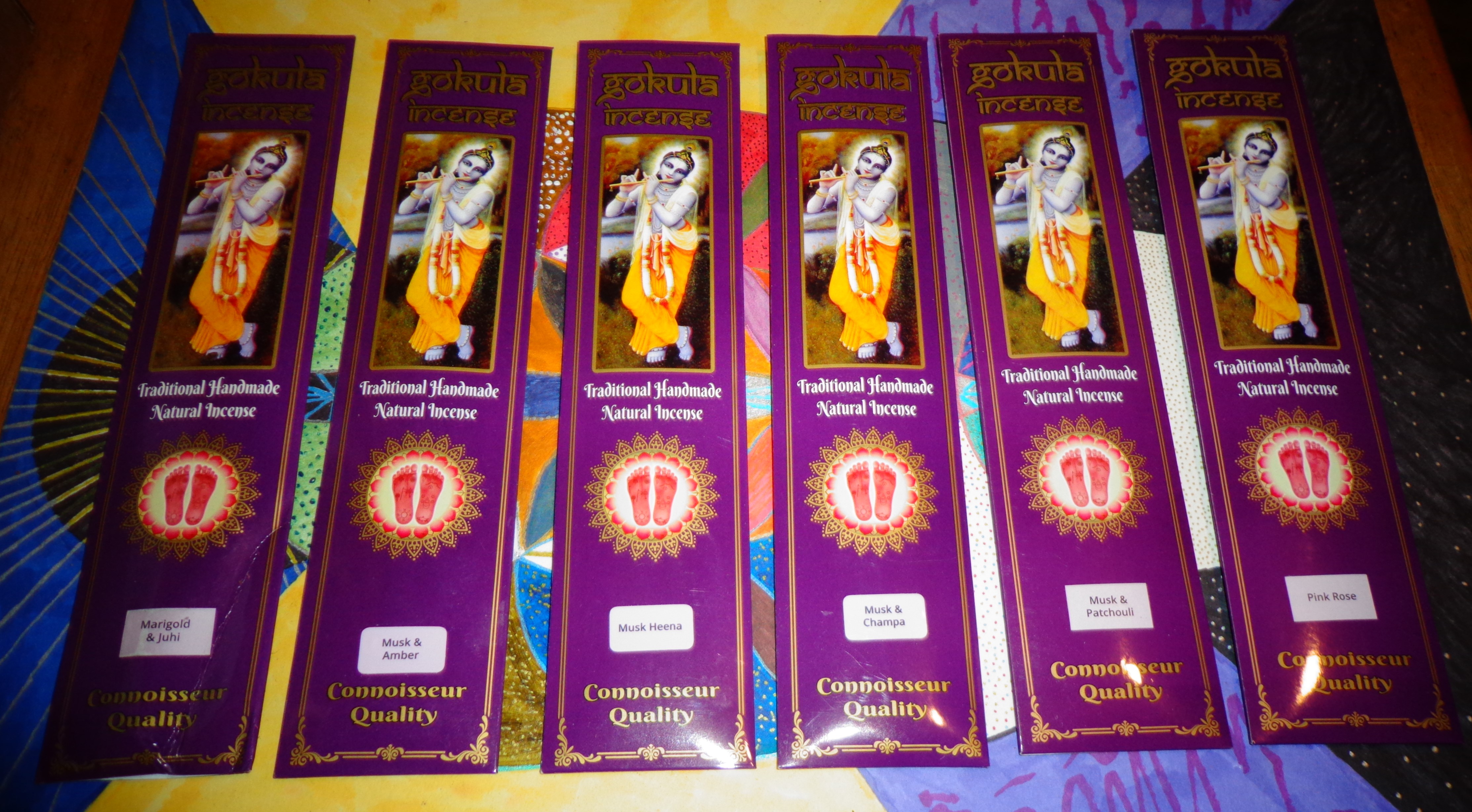 This is the third of four in a series of Gokula Incense reviews, please see the first installment for an introduction to the company.
This is the third of four in a series of Gokula Incense reviews, please see the first installment for an introduction to the company.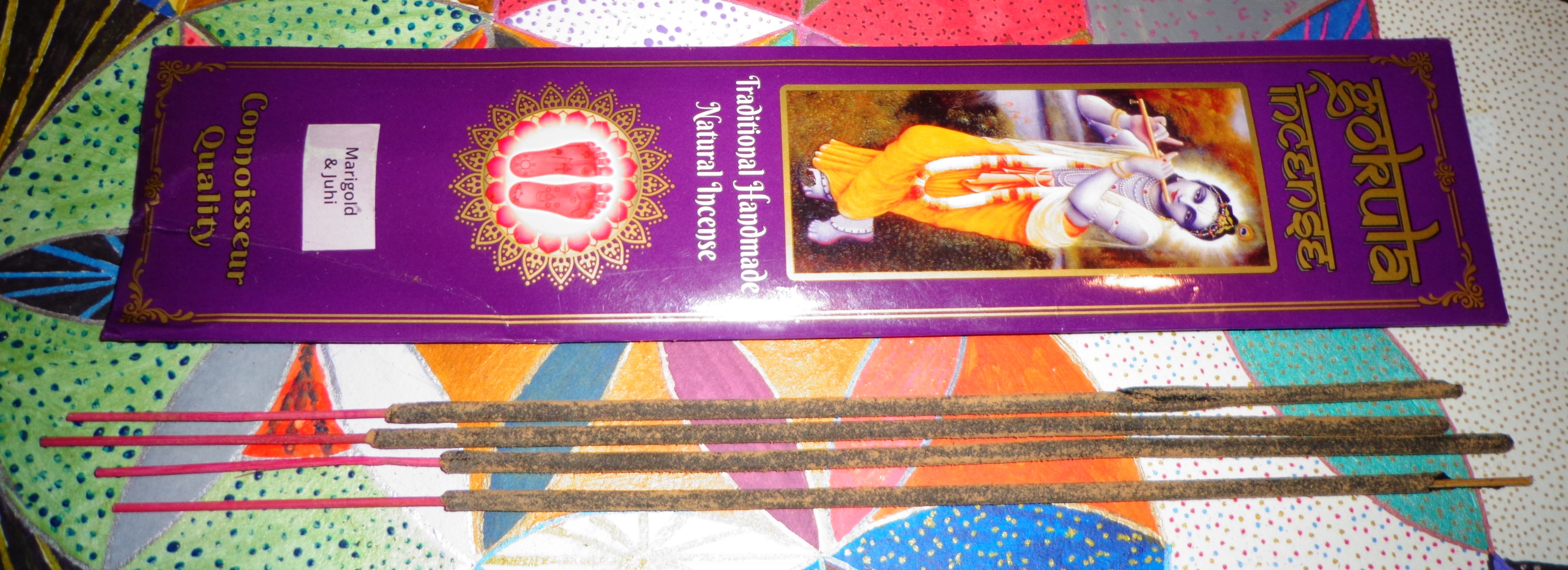 In the latest installment I wrote about three very good floral incenses, some of which used marigold and/or juhi in the aromas. However the
In the latest installment I wrote about three very good floral incenses, some of which used marigold and/or juhi in the aromas. However the 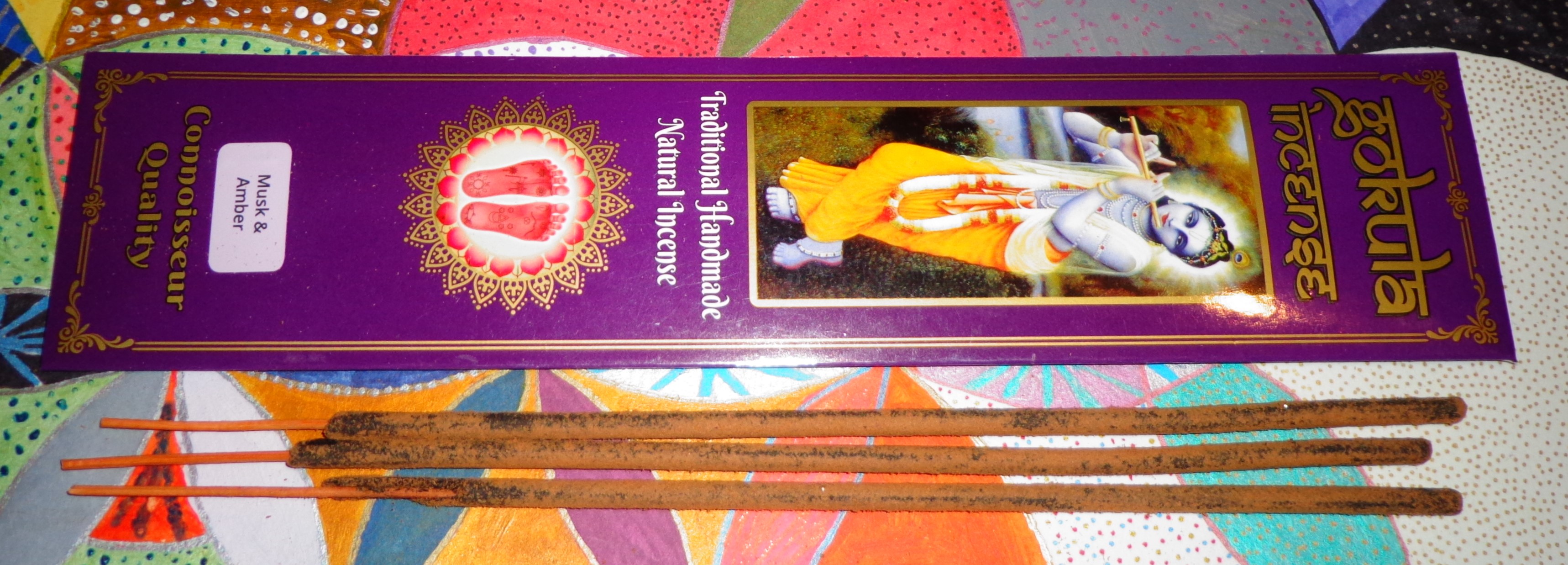 Then we go from maybe the worst to probably the best incense in the catalog that I’ve tried,
Then we go from maybe the worst to probably the best incense in the catalog that I’ve tried, 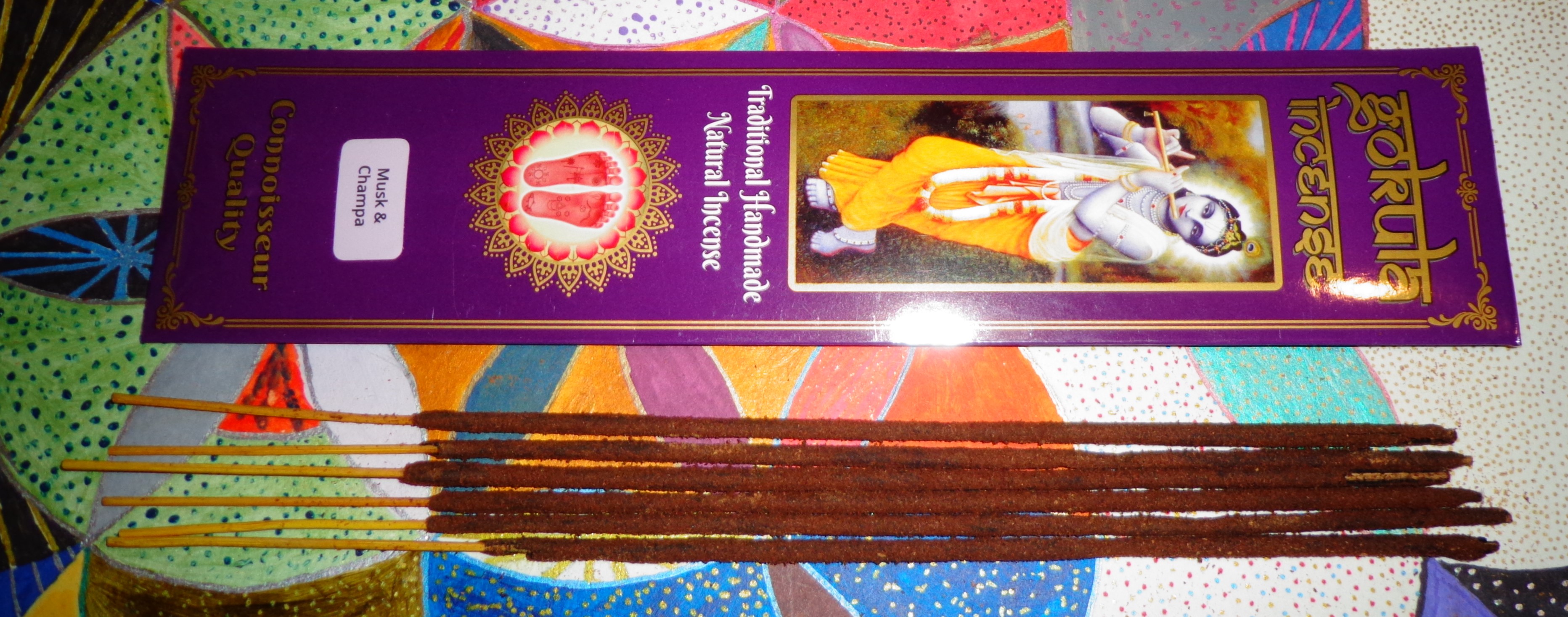 The
The  One of my new favorite aromas of late is heena (also hina), the leaves from the tree that impart a lovely green note very different from western trees. Like amber, and sometimes included with amber, heena imparts a really different characteristic to incenses that tends to make the aroma a bit more complex, because being fairly unique it tends to broaden any profile its put in. While I’d love to see what Gokula imports could do for a Musk, Amber and Heena incense, the
One of my new favorite aromas of late is heena (also hina), the leaves from the tree that impart a lovely green note very different from western trees. Like amber, and sometimes included with amber, heena imparts a really different characteristic to incenses that tends to make the aroma a bit more complex, because being fairly unique it tends to broaden any profile its put in. While I’d love to see what Gokula imports could do for a Musk, Amber and Heena incense, the 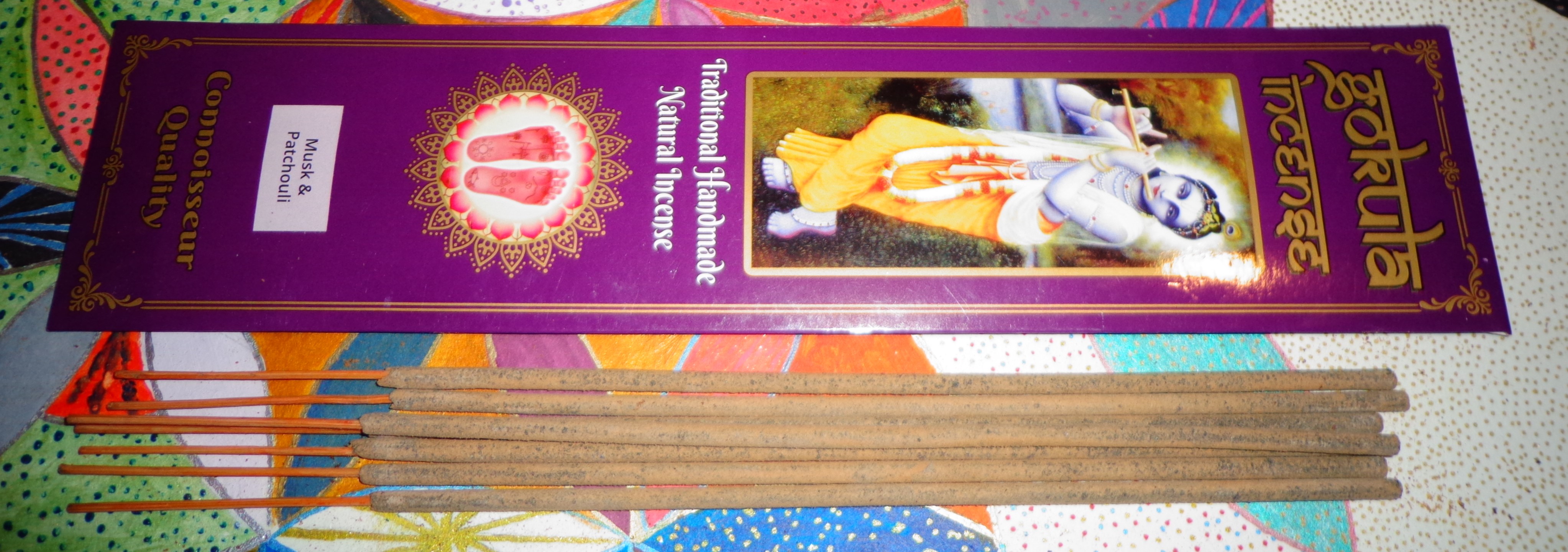 It’s strange that with some of the Gokula musk incenses being so powerful that the
It’s strange that with some of the Gokula musk incenses being so powerful that the 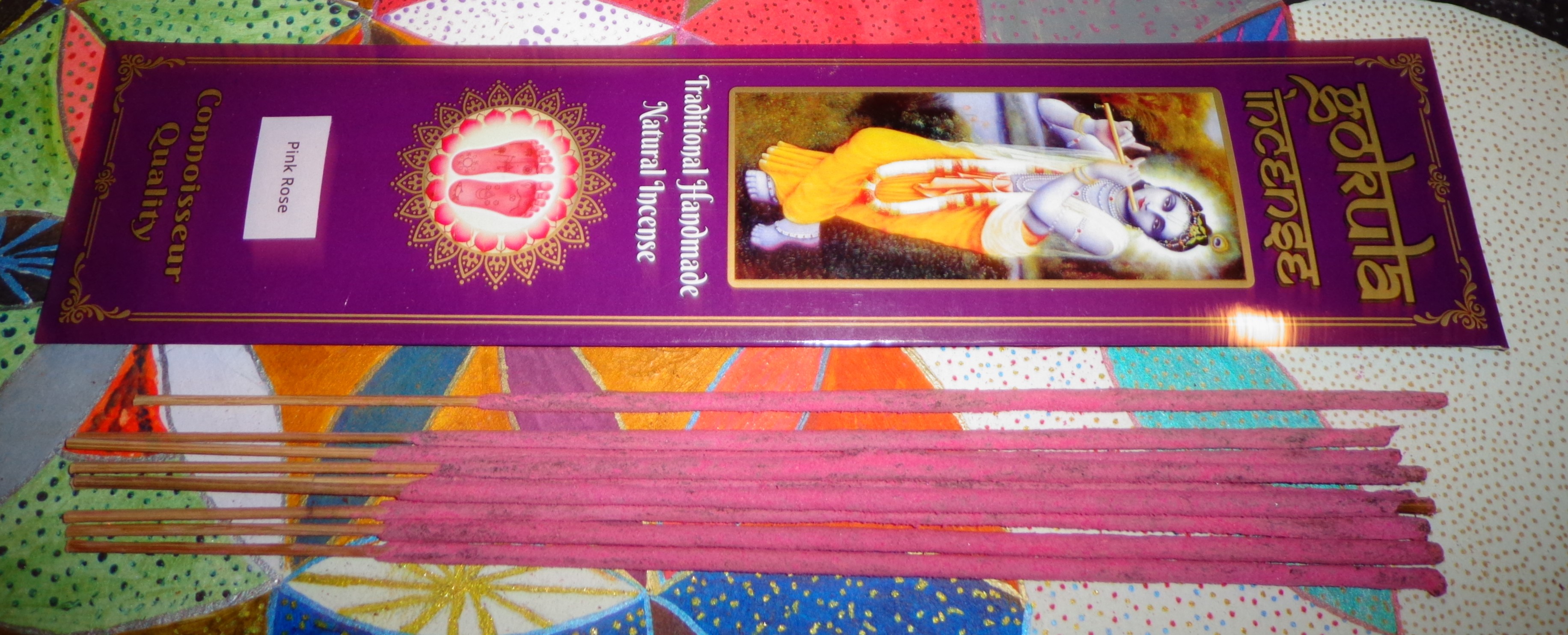 Finally, we have the
Finally, we have the 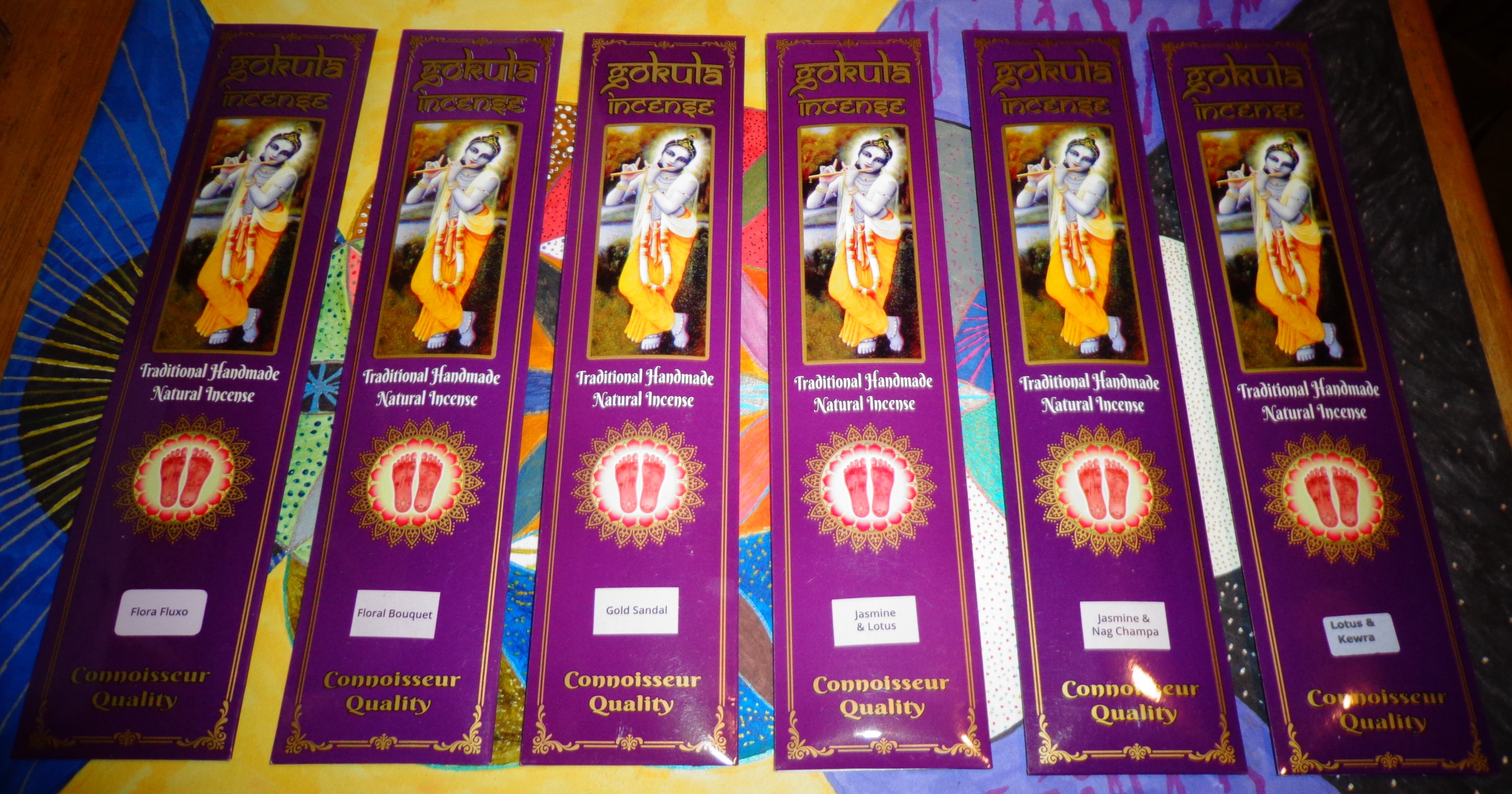 This is the second of four in a series of Gokula Incense reviews, please see the first installment for an introduction to the company.
This is the second of four in a series of Gokula Incense reviews, please see the first installment for an introduction to the company.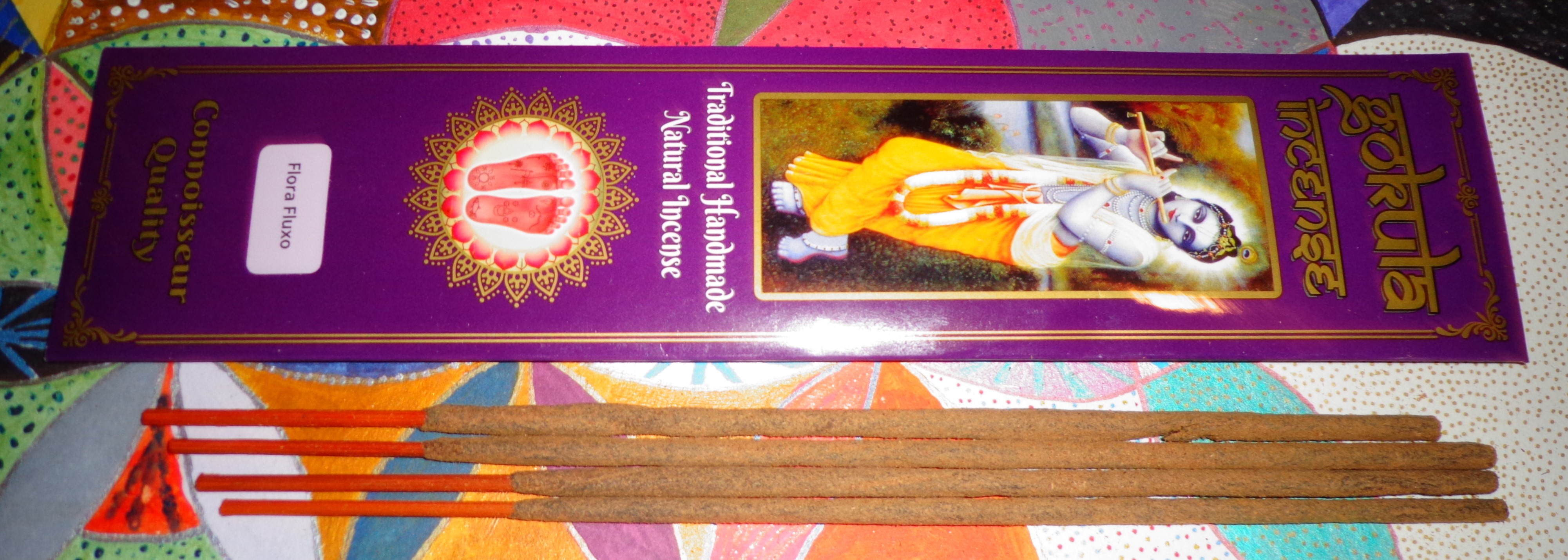 My general impression of flora/fluxo incenses is they usually come with an orange dipped stick (either full or just the end). And Gokula’s variant (one of them really) is actually called
My general impression of flora/fluxo incenses is they usually come with an orange dipped stick (either full or just the end). And Gokula’s variant (one of them really) is actually called 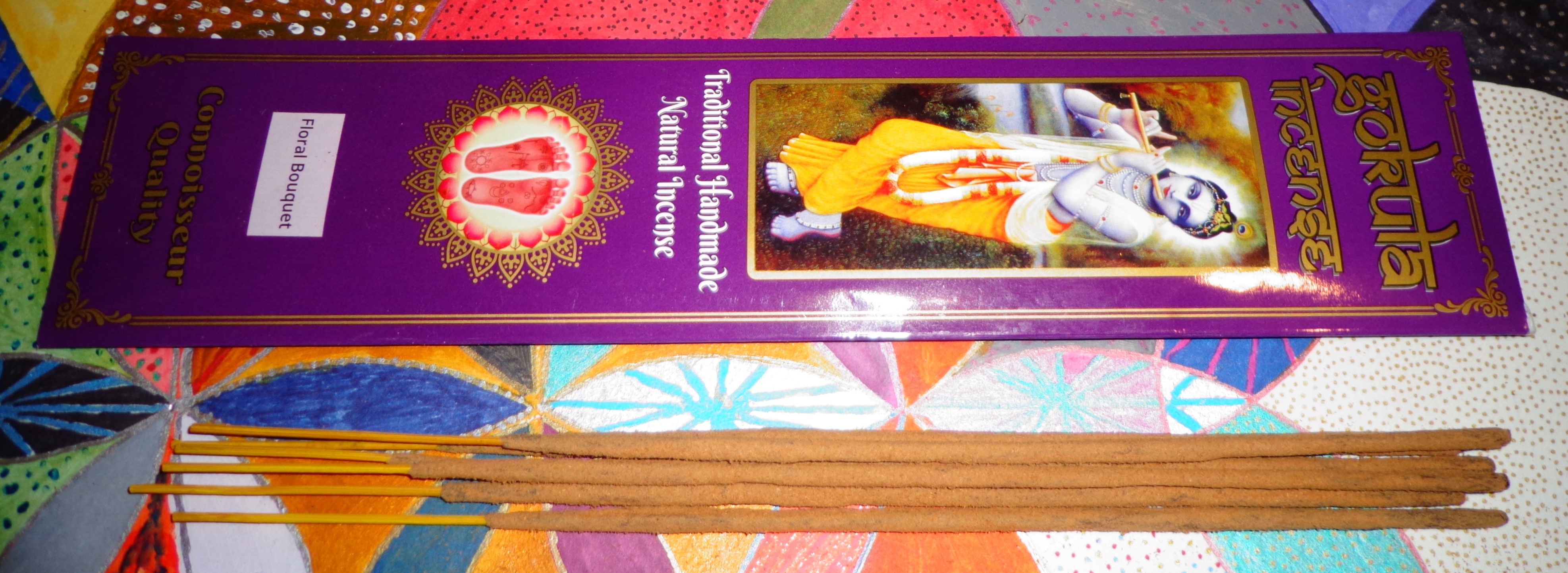
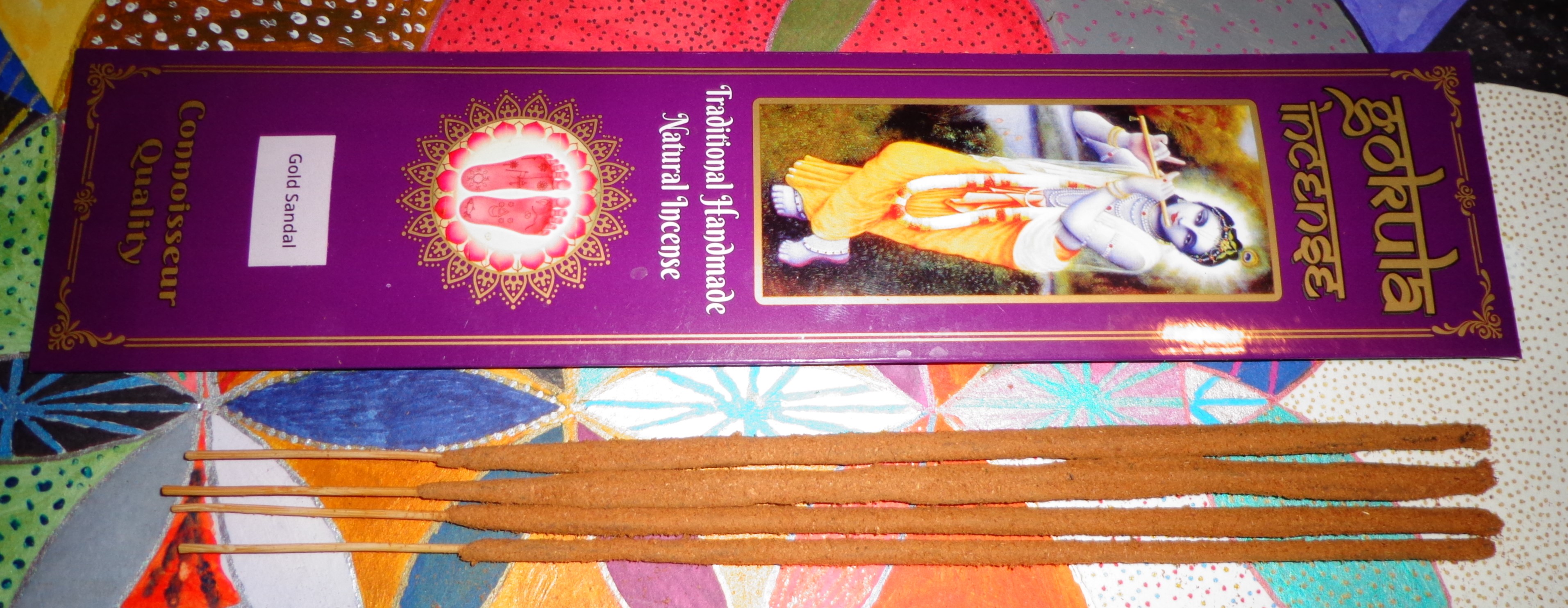
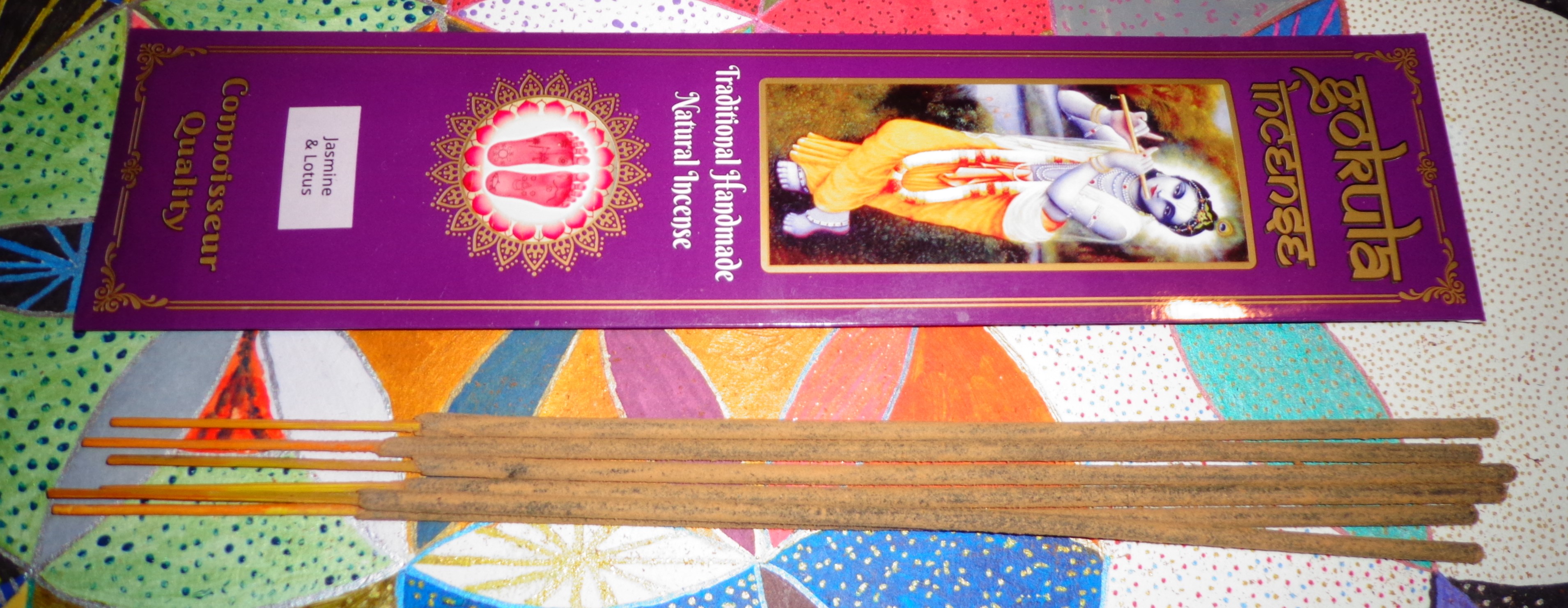 Even though I am going in alphabetical order, the next three incenses share quite a few of the same ingredients and operate very closely in style. The
Even though I am going in alphabetical order, the next three incenses share quite a few of the same ingredients and operate very closely in style. The 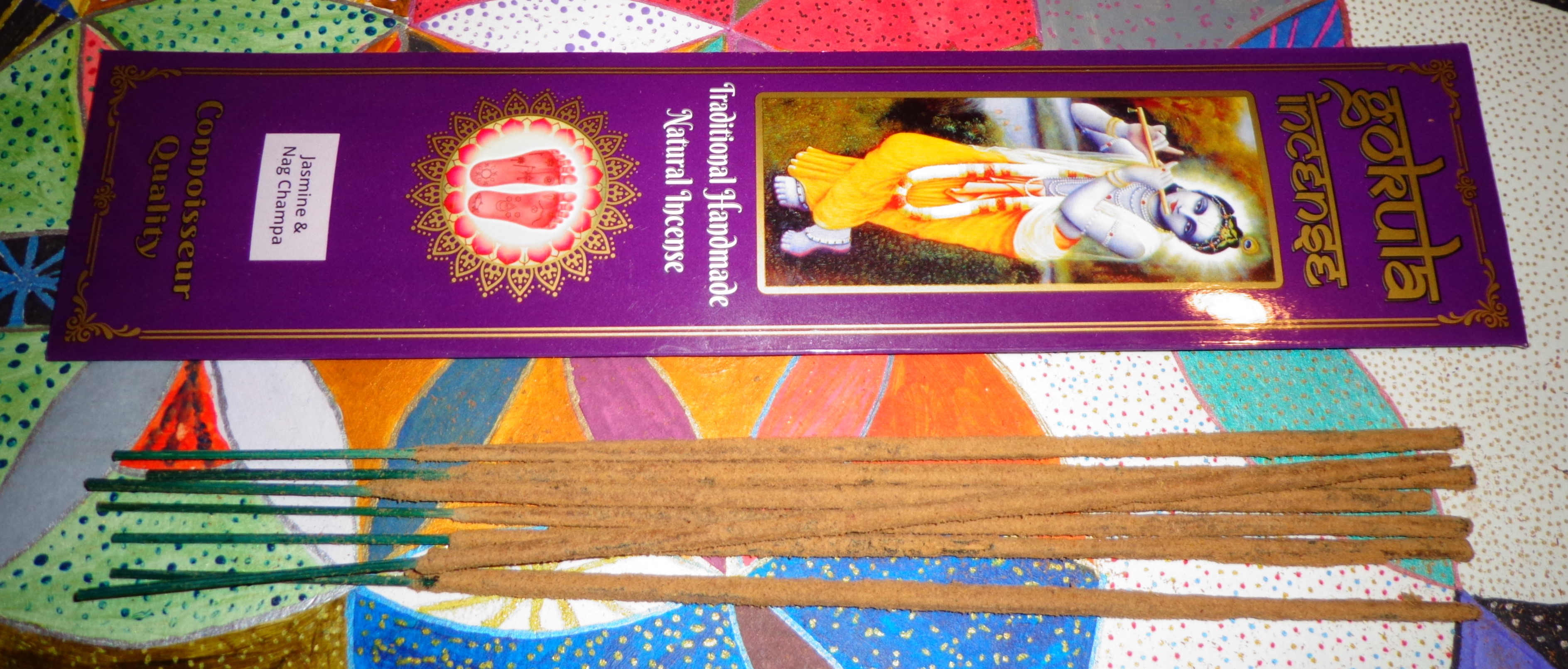 And better yet, the
And better yet, the 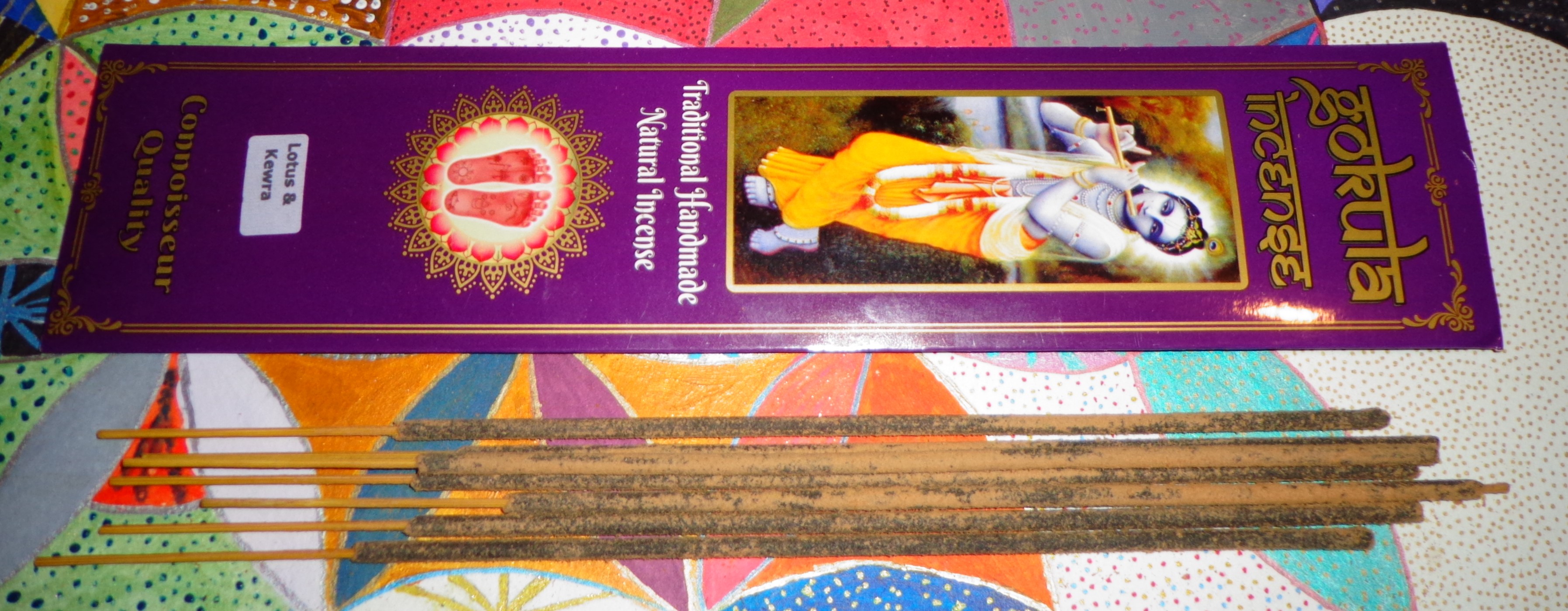 Finally the
Finally the 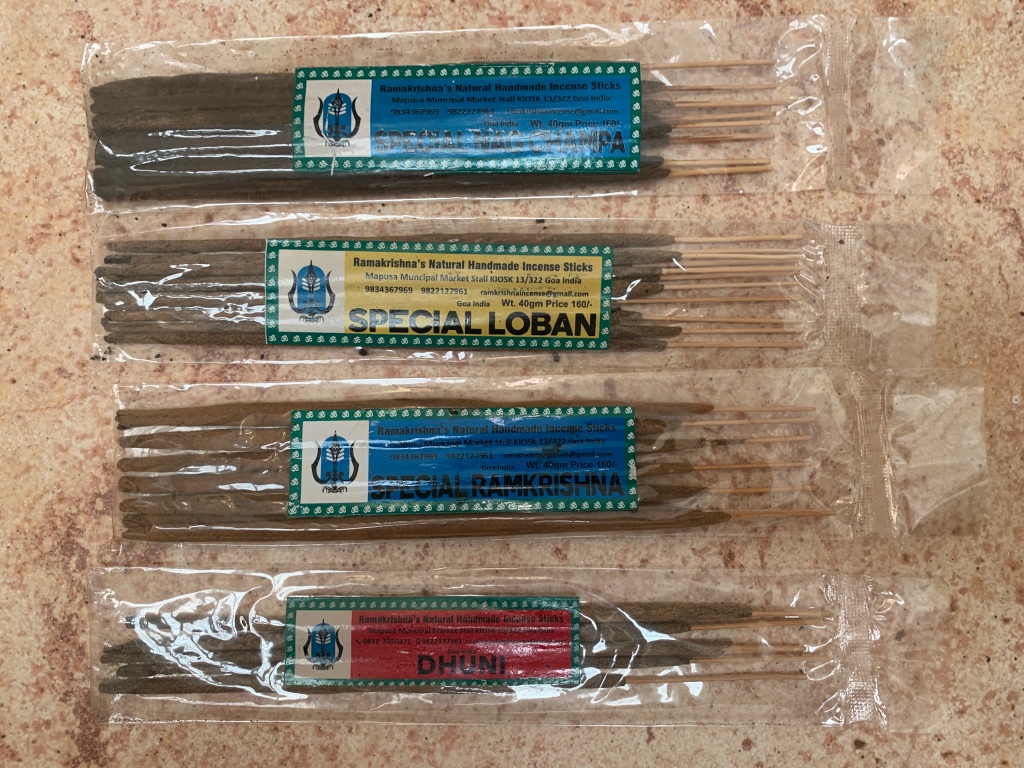
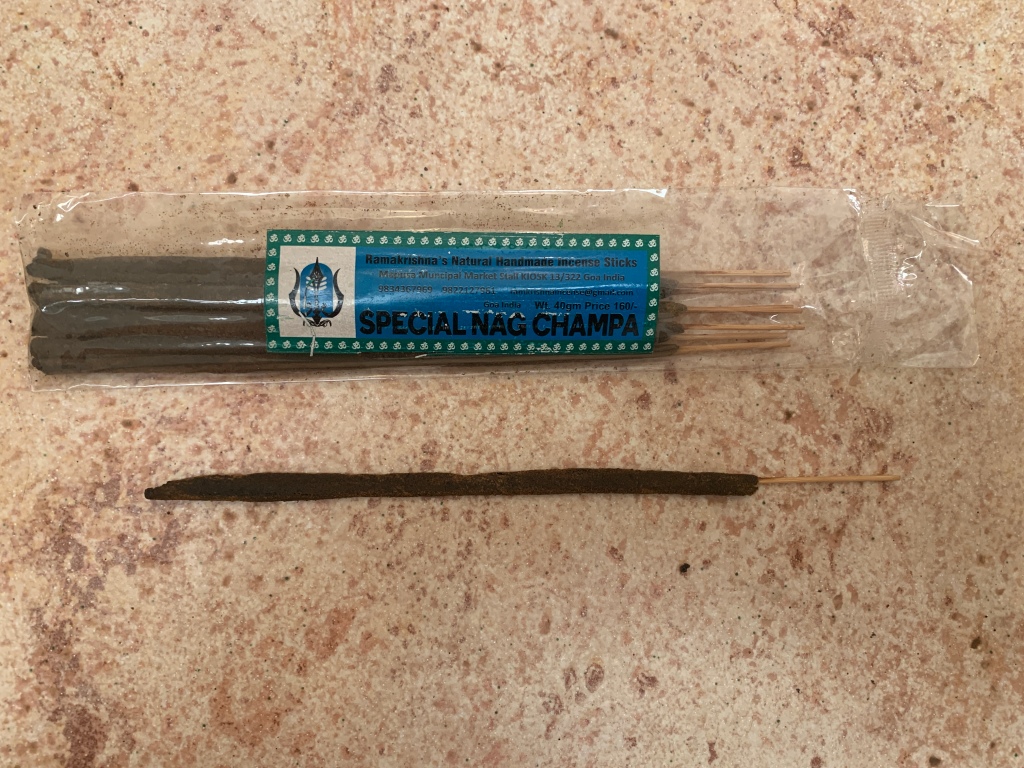
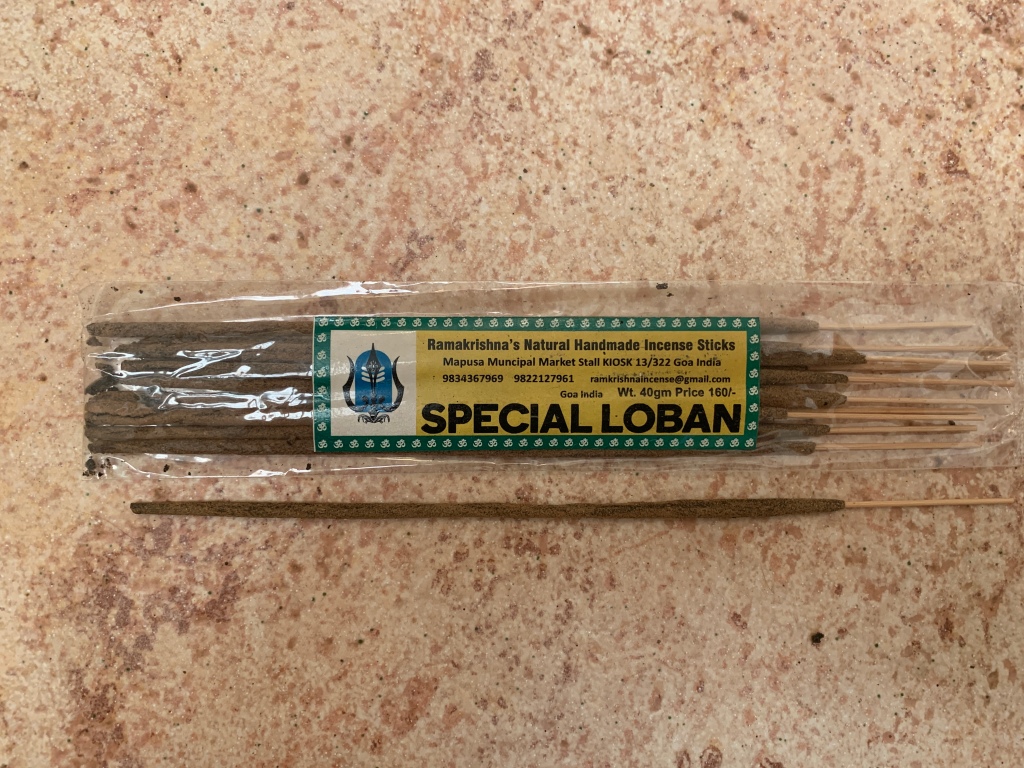
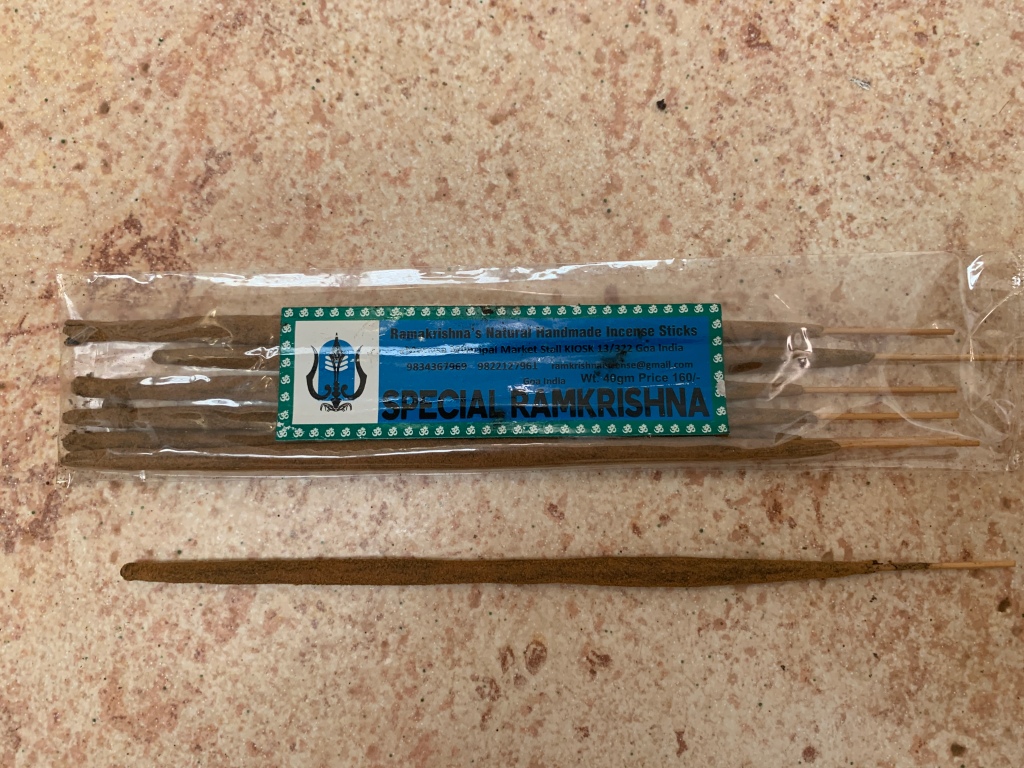
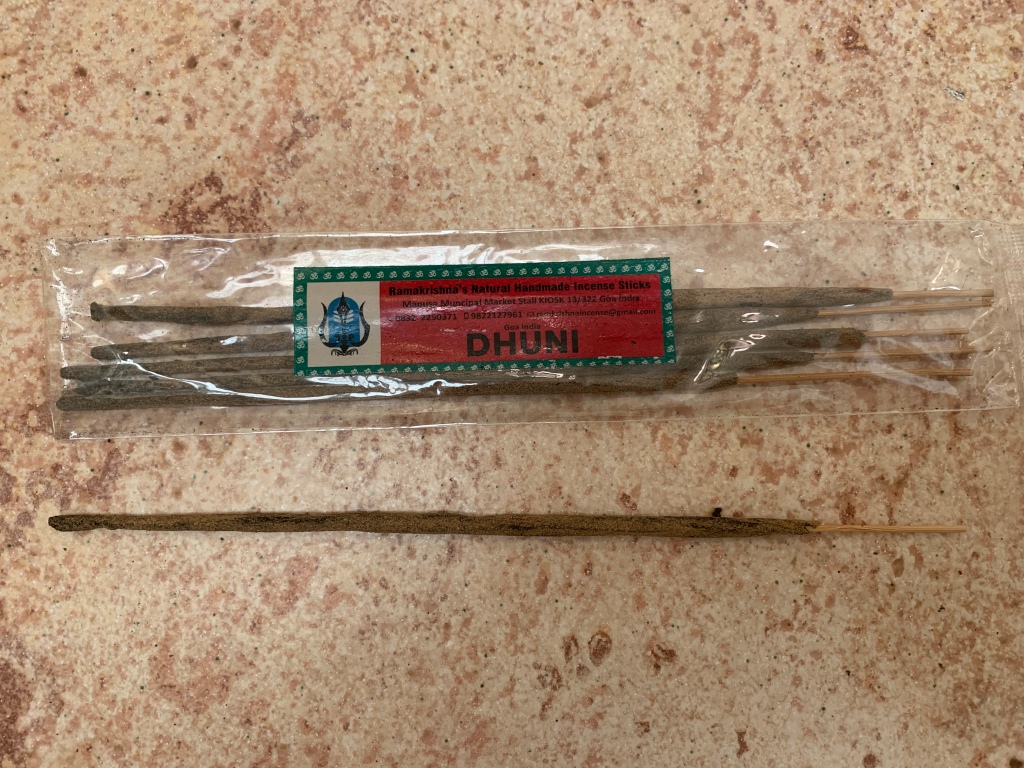
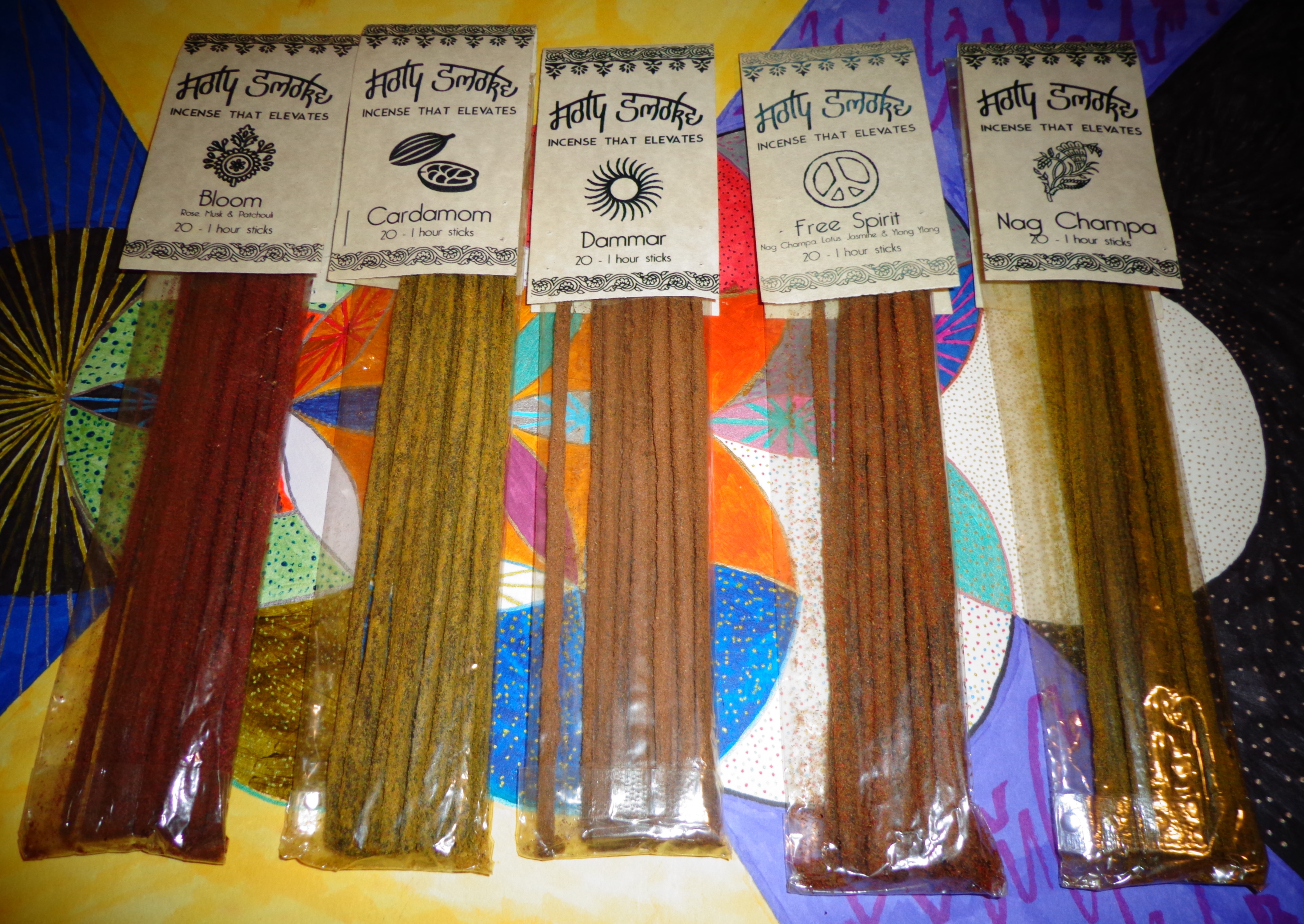 Holy Smoke is the name of a domestic incense creator that can be found on both
Holy Smoke is the name of a domestic incense creator that can be found on both 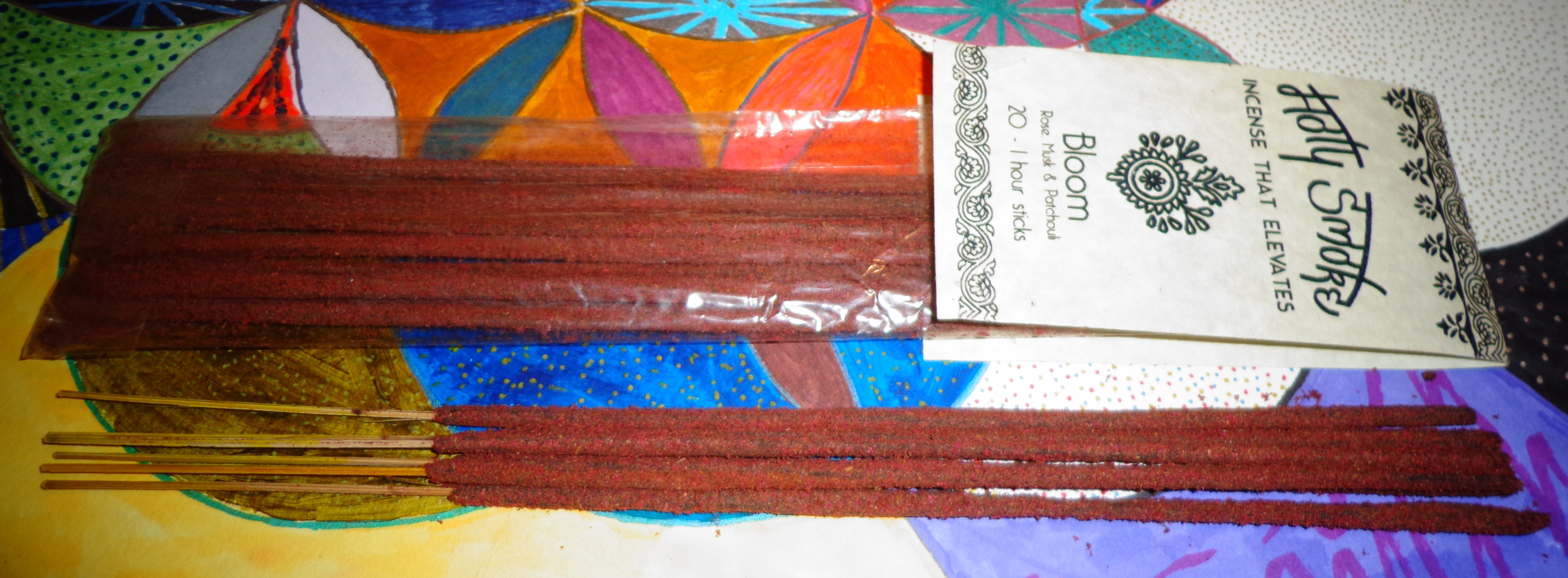 So that lovely purple color on the
So that lovely purple color on the 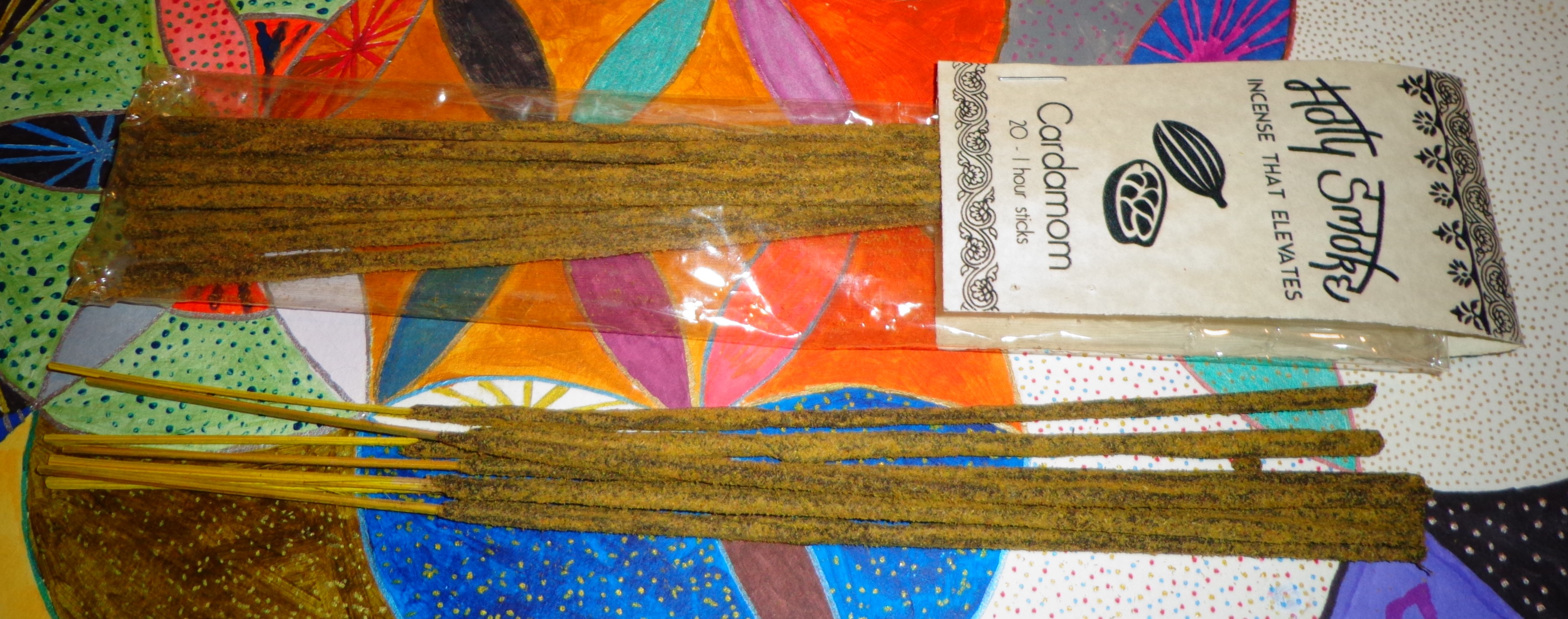 The
The 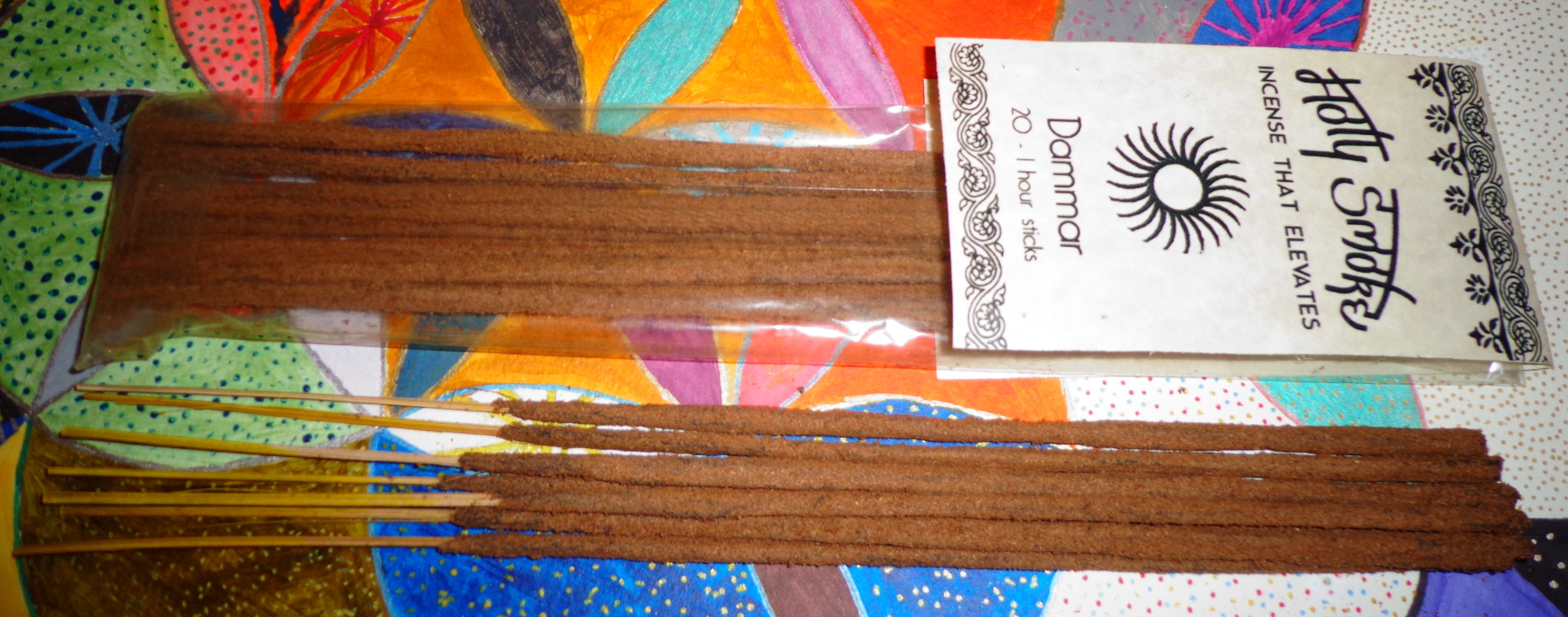 Part of the issue with incenses whose essential oil mixes are this loud is they tend to resemble household products and that’s the main issue with Dammar, an incense with a resin whose lemon-like tendencies push the overall aroma into furniture polish territory. The thing is, where in the Cardamom I could detect some level of actual resin burning here, the lemon characteristics supposedly coming from this resin all seem to be on the oil level. The issue is that it feels a bit chemical on some level in the sense where fruitiness in an air freshener or cleaning product ends up being too cloying. This also runs into having a bit of a bitter edge to it. Unfortunately, it has probably been a while since I tried the actual resin to see how close it is but it seems like here there’s much more going on than just the resin. I don’t mean to doubt the creators claim that these are all natural but sometimes the mixes can still perhaps not work quite as well.
Part of the issue with incenses whose essential oil mixes are this loud is they tend to resemble household products and that’s the main issue with Dammar, an incense with a resin whose lemon-like tendencies push the overall aroma into furniture polish territory. The thing is, where in the Cardamom I could detect some level of actual resin burning here, the lemon characteristics supposedly coming from this resin all seem to be on the oil level. The issue is that it feels a bit chemical on some level in the sense where fruitiness in an air freshener or cleaning product ends up being too cloying. This also runs into having a bit of a bitter edge to it. Unfortunately, it has probably been a while since I tried the actual resin to see how close it is but it seems like here there’s much more going on than just the resin. I don’t mean to doubt the creators claim that these are all natural but sometimes the mixes can still perhaps not work quite as well.

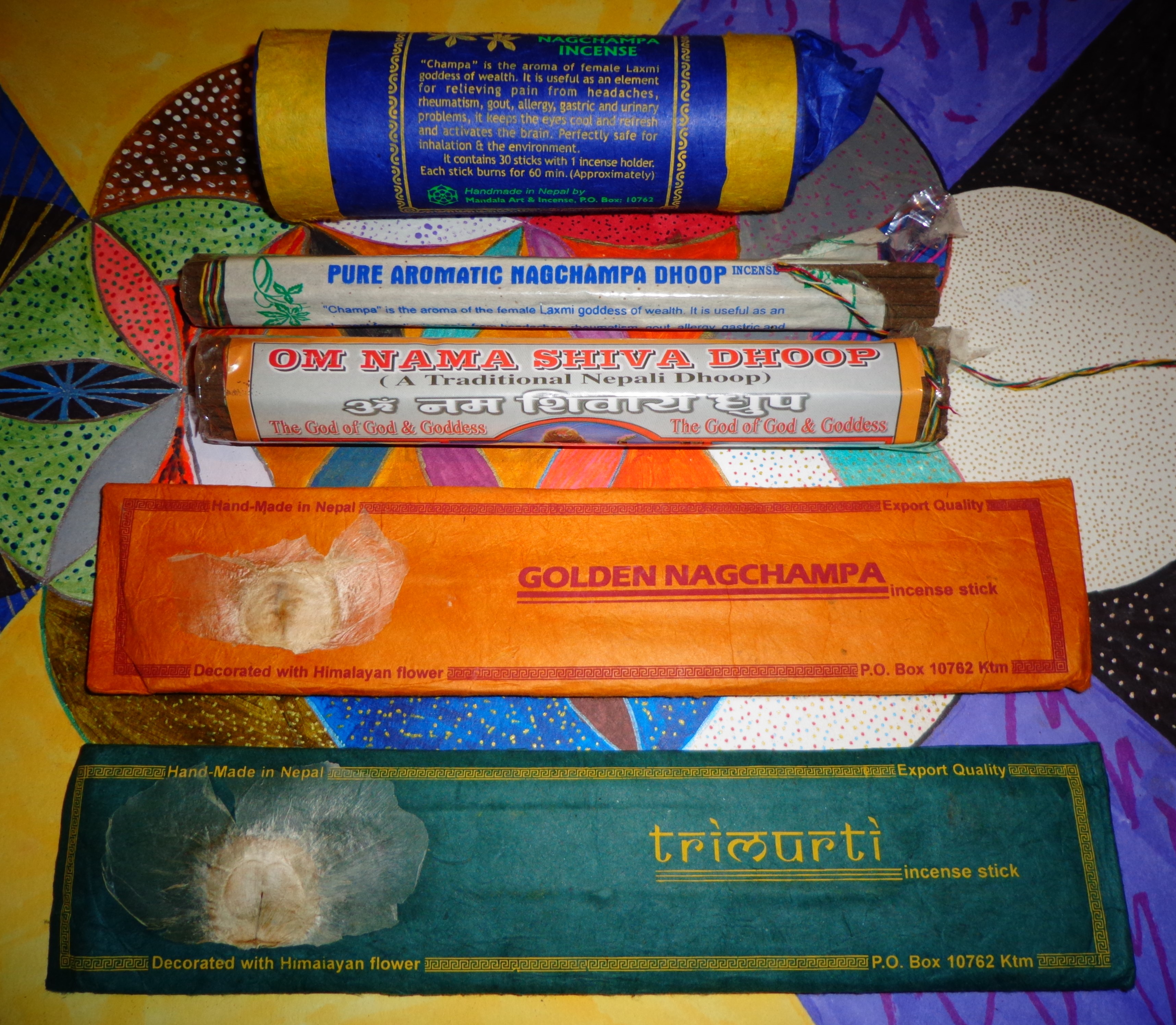 In addition to the Meena and other Indian incenses Everest Traders sent over, they also sent over a quintet of Nepali incenses. Since Essence of the Ages left the incense business, there has been a big hole where a solid source used to be for these incenses, as incensetraditions.ca carries primarily Tibetan and Bhutanese incenses only. Hither and Yon seems to be the primary source for Nepali incenses these days (note as always that “Tibetan” is also used as a style in the sense it means incense that does not use bamboo sticks through the middle, a distinction I need to make for later in this writeup) and there are a few others, but we’re always interested in hearing about new sources.
In addition to the Meena and other Indian incenses Everest Traders sent over, they also sent over a quintet of Nepali incenses. Since Essence of the Ages left the incense business, there has been a big hole where a solid source used to be for these incenses, as incensetraditions.ca carries primarily Tibetan and Bhutanese incenses only. Hither and Yon seems to be the primary source for Nepali incenses these days (note as always that “Tibetan” is also used as a style in the sense it means incense that does not use bamboo sticks through the middle, a distinction I need to make for later in this writeup) and there are a few others, but we’re always interested in hearing about new sources.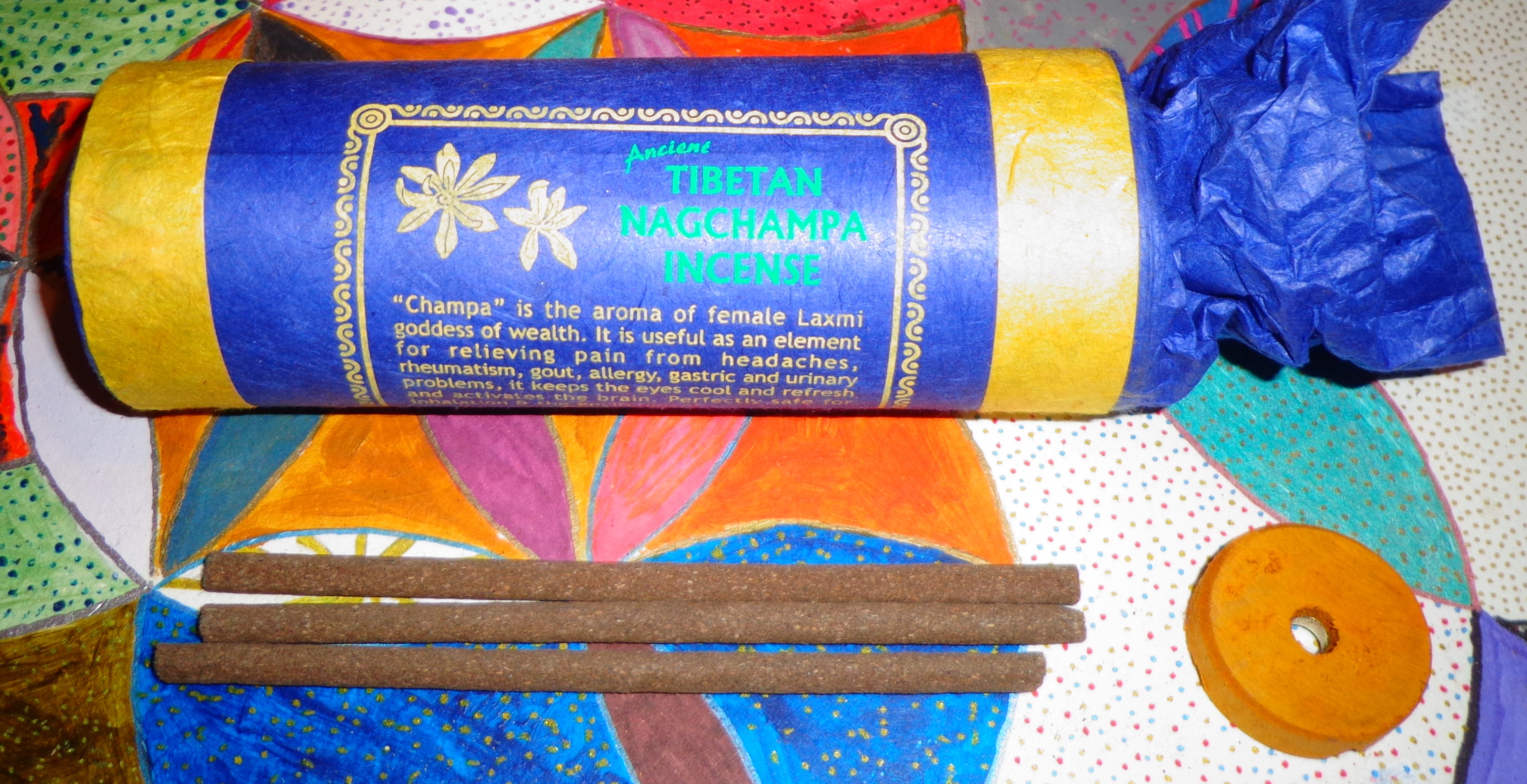 And it was interesting in looking around a bit that the first incense that pops up at Hither and Yon is Mandala Art & Incense’s
And it was interesting in looking around a bit that the first incense that pops up at Hither and Yon is Mandala Art & Incense’s  So how does the Natural Nepali Dhoop
So how does the Natural Nepali Dhoop  So in order to properly review Traditional Nepali Dhoop Pvt. Ltd.’s Om Nama Shiva Dhoop (I could not find an ebay link to this at present, but will add when I’m made aware of it) I thought it worth queueing up the great
So in order to properly review Traditional Nepali Dhoop Pvt. Ltd.’s Om Nama Shiva Dhoop (I could not find an ebay link to this at present, but will add when I’m made aware of it) I thought it worth queueing up the great 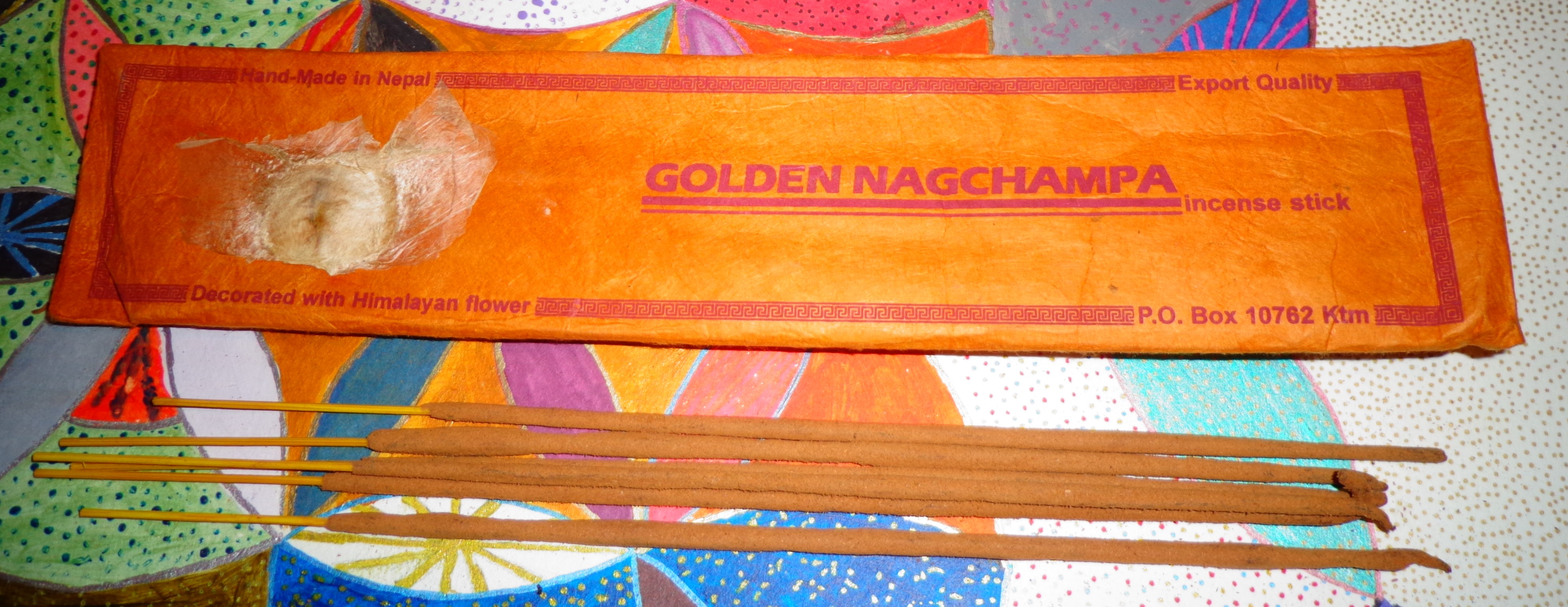 Moving to the
Moving to the  The issue with Trimurti and this is one ORS staff discuss a lot is that when incenses are named after religious or spiritual concepts, gods and goddesses etc, it can be tough to get a bead on what’s actually going on in the scent and so I’m limited in my description to say how successful the Trimurti is for what it’s trying to accomplish. From my perspective Trimurti barely gets past its base which is some sort of nebulous mix of evergreen woods. It’s also a bit spicy and I would guess there might be a bit of something like myrrh or gugal gum in the mix. What is perhaps missing and I can compare this to the Golden Nagchampa (which has it) is an intensity in aroma that makes it a bit more memorable and attention arresting. I do seem to remember the line was full of incenses like this. It may be entirely because the line is using 100% natural ingredients and not any sort of perfume wizardry, which would largely be in keeping with many Nepali incenses. But keep in mind as well if this is something you might recognize as an aroma you like you could feel differently from me.
The issue with Trimurti and this is one ORS staff discuss a lot is that when incenses are named after religious or spiritual concepts, gods and goddesses etc, it can be tough to get a bead on what’s actually going on in the scent and so I’m limited in my description to say how successful the Trimurti is for what it’s trying to accomplish. From my perspective Trimurti barely gets past its base which is some sort of nebulous mix of evergreen woods. It’s also a bit spicy and I would guess there might be a bit of something like myrrh or gugal gum in the mix. What is perhaps missing and I can compare this to the Golden Nagchampa (which has it) is an intensity in aroma that makes it a bit more memorable and attention arresting. I do seem to remember the line was full of incenses like this. It may be entirely because the line is using 100% natural ingredients and not any sort of perfume wizardry, which would largely be in keeping with many Nepali incenses. But keep in mind as well if this is something you might recognize as an aroma you like you could feel differently from me.  It wasn’t long ago I bought what I thought was Meena Supreme, but when I took it out, I was somewhat nonplussed. ORS has been around a while and I was originally introduced to Meena Supreme by Paul Eagle when it ended up being Happy Hari’s second incense to distribute after the Gold Nagchampa. I received a surprising number of samples at the time and some of these incenses came in Happy Hari style labels but quite a few also came in little boxes like the ones pictured here. Meena Supreme, I would guess, has to be one of the top five “name” incenses known well inside and outside India, with maybe Nag Champa and Sai Flora at the top and this one right after it. And there is a reason why, it’s a very distinctive incense, a unique combination of materials and perfumes that I reviewed way back in the day and archived on
It wasn’t long ago I bought what I thought was Meena Supreme, but when I took it out, I was somewhat nonplussed. ORS has been around a while and I was originally introduced to Meena Supreme by Paul Eagle when it ended up being Happy Hari’s second incense to distribute after the Gold Nagchampa. I received a surprising number of samples at the time and some of these incenses came in Happy Hari style labels but quite a few also came in little boxes like the ones pictured here. Meena Supreme, I would guess, has to be one of the top five “name” incenses known well inside and outside India, with maybe Nag Champa and Sai Flora at the top and this one right after it. And there is a reason why, it’s a very distinctive incense, a unique combination of materials and perfumes that I reviewed way back in the day and archived on  “But even if you can’t count on incense nirvana, usually something so prized is usually going to be quite good and for the most part
“But even if you can’t count on incense nirvana, usually something so prized is usually going to be quite good and for the most part  Everest Traders also sent over some other Meena Perfumery Industries incenses, which also were a lot of fun (and I would mention here the ET packaging is really nice, very cognizant of protecting all the incenses from damage). One thing I came to find out rather quickly is other than the Sambrani Stems, which I will get to last, all of the other Meena incenses share a similar base to the Supreme and share a lot of the same aromatic notes, which makes it a little harder to separate one from the other. You might want to think of these in the sense that there’s probably a top perfume mix that differs from incense to incense. So the first one of these is Meena Flora, described as a “fluxo incense.” We have, of course, reviewed several from this style over the years, the most famous being the red package Sai Flora, but we, perhaps most recently, took a look at a couple of El incenses in the same category, These are thick stick, very distinctive incenses and so you might not only consider the Meena base for the
Everest Traders also sent over some other Meena Perfumery Industries incenses, which also were a lot of fun (and I would mention here the ET packaging is really nice, very cognizant of protecting all the incenses from damage). One thing I came to find out rather quickly is other than the Sambrani Stems, which I will get to last, all of the other Meena incenses share a similar base to the Supreme and share a lot of the same aromatic notes, which makes it a little harder to separate one from the other. You might want to think of these in the sense that there’s probably a top perfume mix that differs from incense to incense. So the first one of these is Meena Flora, described as a “fluxo incense.” We have, of course, reviewed several from this style over the years, the most famous being the red package Sai Flora, but we, perhaps most recently, took a look at a couple of El incenses in the same category, These are thick stick, very distinctive incenses and so you might not only consider the Meena base for the  Where both the Supreme and the Flora are small 8 stick boxes, the
Where both the Supreme and the Flora are small 8 stick boxes, the  One of the reasons Indian King struck me as a champa type is because it’s not terribly far off from the
One of the reasons Indian King struck me as a champa type is because it’s not terribly far off from the  So then there’s
So then there’s  Now the
Now the 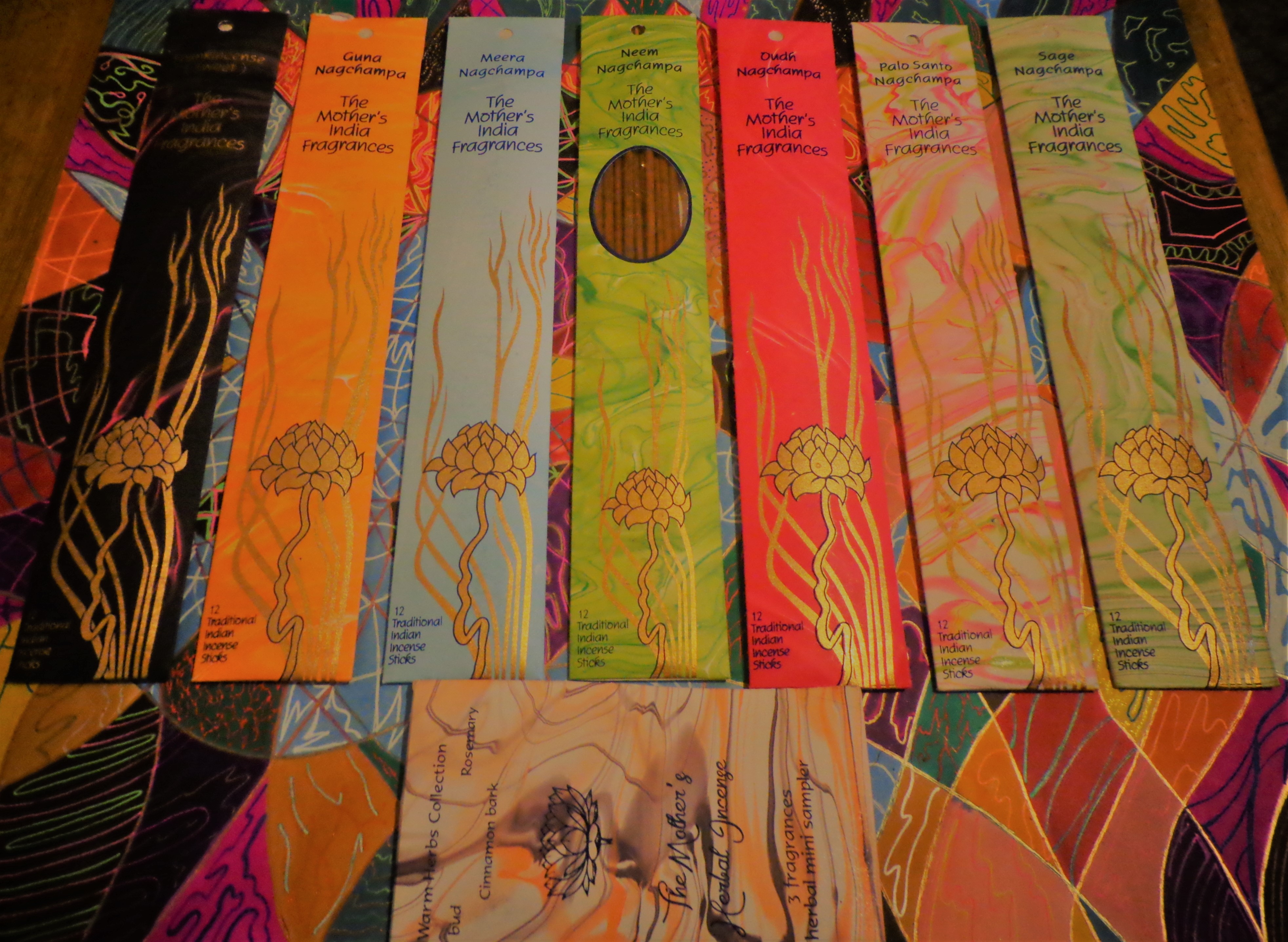 Please be sure to read Part 1 of this review as this is really a continuation of that review and that context is somewhat relateable to how I continue below. I will also note again here that all incenses in this range can be found at
Please be sure to read Part 1 of this review as this is really a continuation of that review and that context is somewhat relateable to how I continue below. I will also note again here that all incenses in this range can be found at  The issue with calling something an Oudh Nagchampa is different from a lot of other aromatics because oudh, of course, is an agarwood-based scent and oudhs can be stratospherically expensive, so one must lower one’s expectations for an incense that is only $3 for 12 sticks. We have certainly also had our expectations set by the Absolute Bliss/Happy Hari and Temple of Incense lines with sticks like Oud Masala and so forth that are still quite affordable while delivering very satisfying incenses with legitimate and surprisingly powerful oudh notes (although these are essentially 2-3 times as expensive if not more so). And so for me, I try to look at something like this new nag champa in the sense that does it live up to the name and if it doesn’t is it a good incense on its own? In terms of the former issue the oudh note isn’t the sort of rocketship it is in the previously mentioned lines, it does not sit about the champa base and dominate, it’s a much more subsumed and subtle scent. In fact it took me a bit less incense fatigue and a second stick to notice that it is actually in there as part of the mix.
The issue with calling something an Oudh Nagchampa is different from a lot of other aromatics because oudh, of course, is an agarwood-based scent and oudhs can be stratospherically expensive, so one must lower one’s expectations for an incense that is only $3 for 12 sticks. We have certainly also had our expectations set by the Absolute Bliss/Happy Hari and Temple of Incense lines with sticks like Oud Masala and so forth that are still quite affordable while delivering very satisfying incenses with legitimate and surprisingly powerful oudh notes (although these are essentially 2-3 times as expensive if not more so). And so for me, I try to look at something like this new nag champa in the sense that does it live up to the name and if it doesn’t is it a good incense on its own? In terms of the former issue the oudh note isn’t the sort of rocketship it is in the previously mentioned lines, it does not sit about the champa base and dominate, it’s a much more subsumed and subtle scent. In fact it took me a bit less incense fatigue and a second stick to notice that it is actually in there as part of the mix. The next two aromas, sort of like the Neem Nagchampa, strike me as pretty strange and experimental for a nag champa format as both palo santo and sage aren’t aromatics I think would match up well with a sweeter halmaddi sort of masala. The Palo Santo Nagchampa may then be the first of its ilk and it’s a very interesting match indeed. For one thing, the palo santo itself is quite good quality and very reminiscent of the finer wood itself, so it’s off to a good start on that front. The base seems to have some of the more chocolate and confectionary qualities of the Sweet Frankincense and Guna Nagchampa, although it’s certainly not quite as decadent as either. But it seems modified appropriately in order to actually make a palo santo nag champa and balance the Mother’s format against what is a very identifiable and unique woody aroma. Now you will either know or not know if palo santo is to your taste, but its surge in interest among lovers of Native and South American culture know that the aroma has made a significant dent in the new age markets with its popularity. I might caution one to try the wood out first rather than dive in here, but honestly the palo santo note here is completely legit and it is hard to imagine Mother’s could have done a better job with this one.
The next two aromas, sort of like the Neem Nagchampa, strike me as pretty strange and experimental for a nag champa format as both palo santo and sage aren’t aromatics I think would match up well with a sweeter halmaddi sort of masala. The Palo Santo Nagchampa may then be the first of its ilk and it’s a very interesting match indeed. For one thing, the palo santo itself is quite good quality and very reminiscent of the finer wood itself, so it’s off to a good start on that front. The base seems to have some of the more chocolate and confectionary qualities of the Sweet Frankincense and Guna Nagchampa, although it’s certainly not quite as decadent as either. But it seems modified appropriately in order to actually make a palo santo nag champa and balance the Mother’s format against what is a very identifiable and unique woody aroma. Now you will either know or not know if palo santo is to your taste, but its surge in interest among lovers of Native and South American culture know that the aroma has made a significant dent in the new age markets with its popularity. I might caution one to try the wood out first rather than dive in here, but honestly the palo santo note here is completely legit and it is hard to imagine Mother’s could have done a better job with this one. Sage, on the other hand, is a strange beast in that sage wrapped for smudging (or used in cooking) smells a lot different to my nose than oil distillations and then either one’s application to a masala can also end up varying in a whole lot of directions. Check out Stephen’s reviews of the Temple of Incense
Sage, on the other hand, is a strange beast in that sage wrapped for smudging (or used in cooking) smells a lot different to my nose than oil distillations and then either one’s application to a masala can also end up varying in a whole lot of directions. Check out Stephen’s reviews of the Temple of Incense
You must be logged in to post a comment.